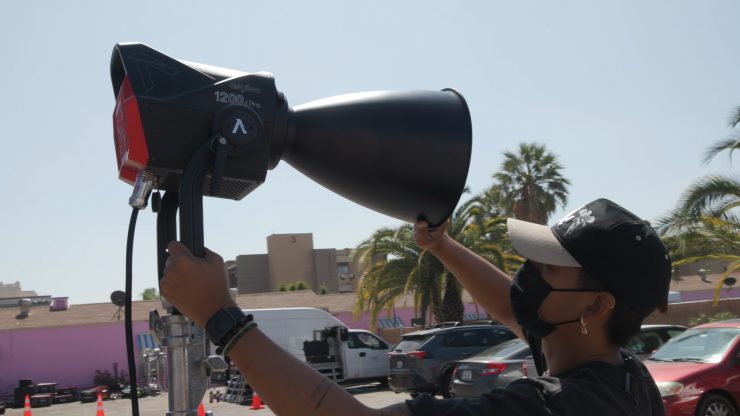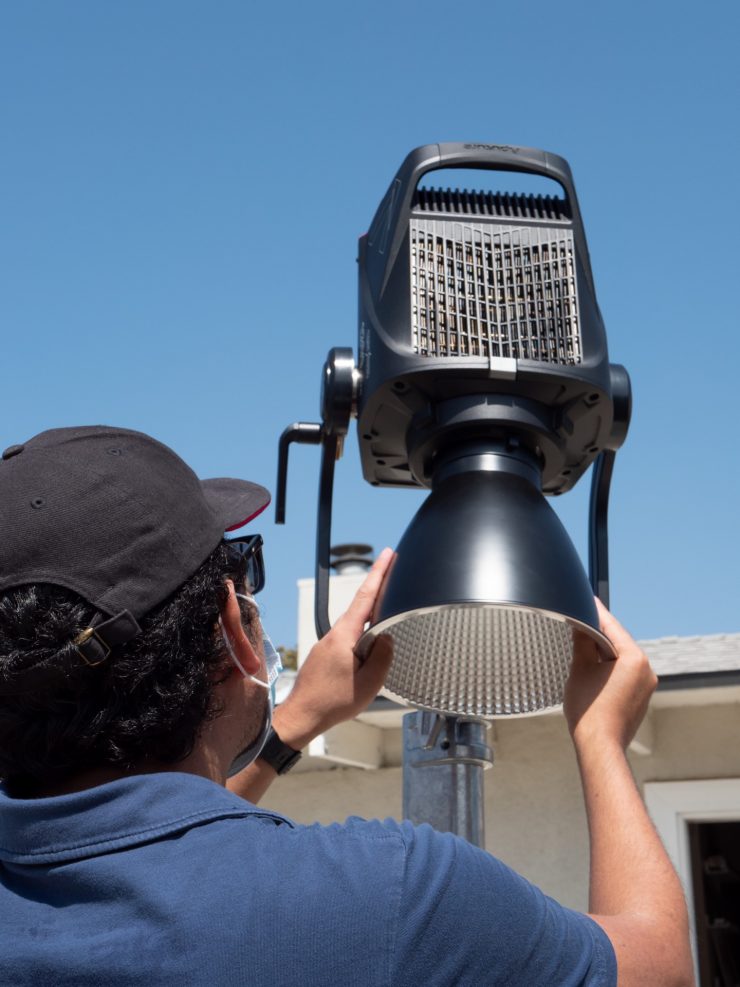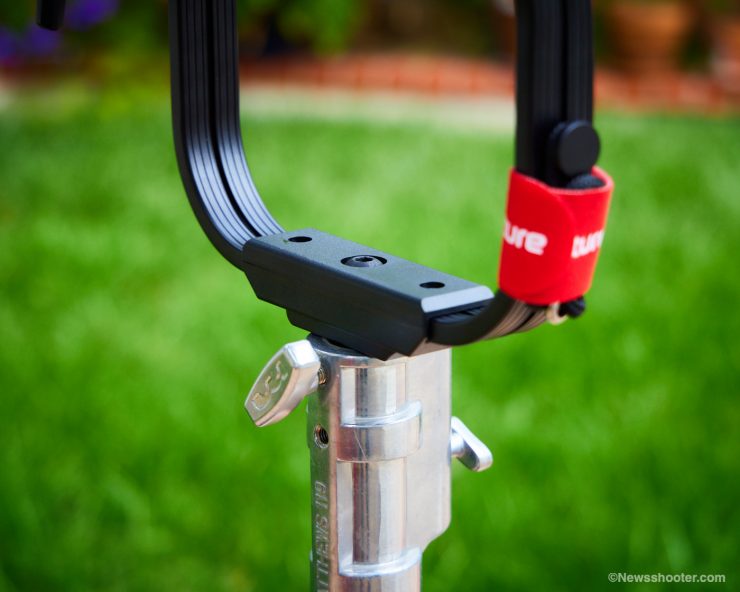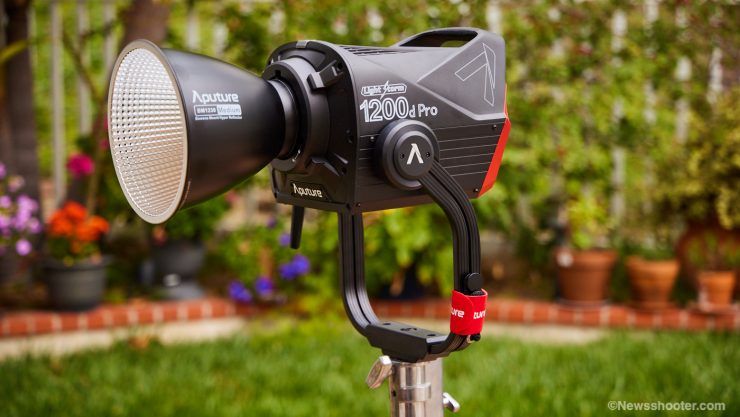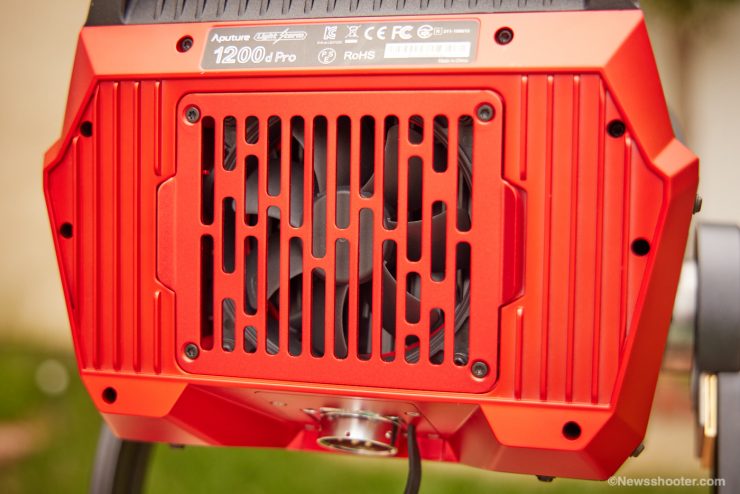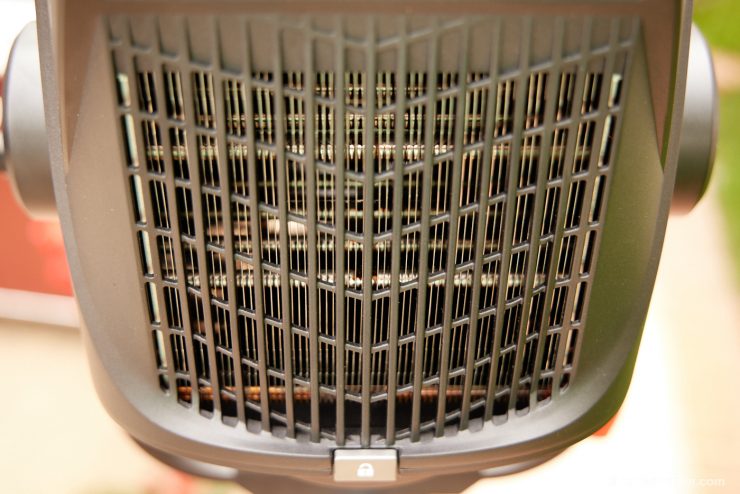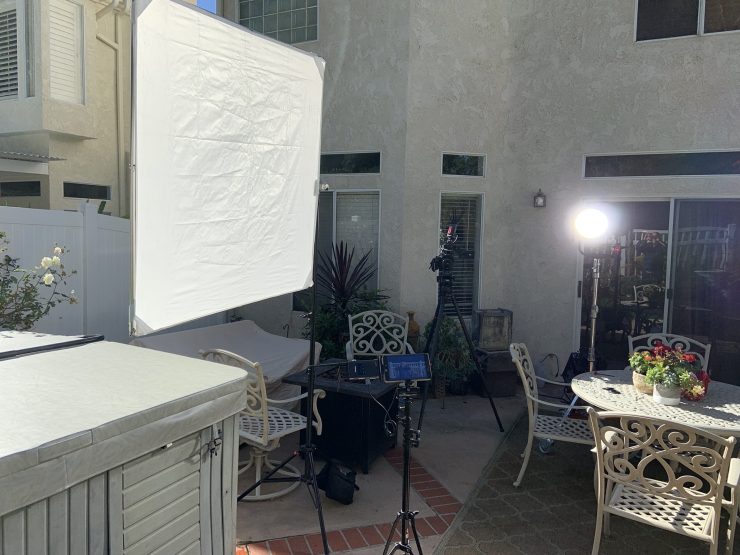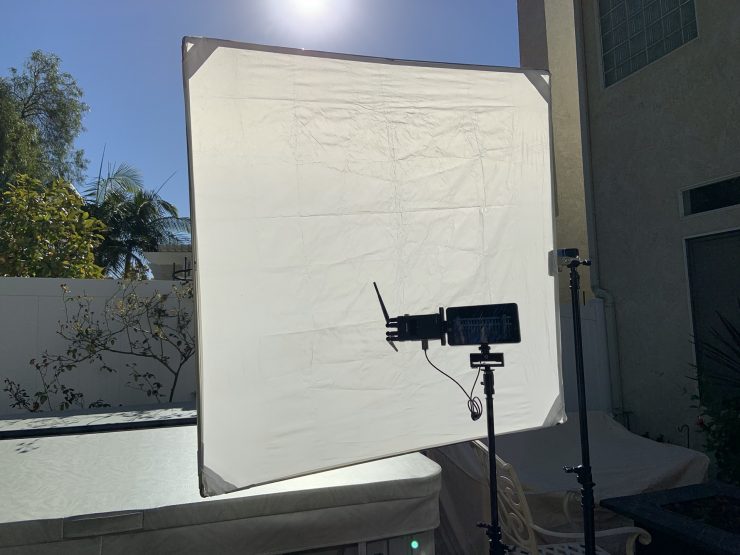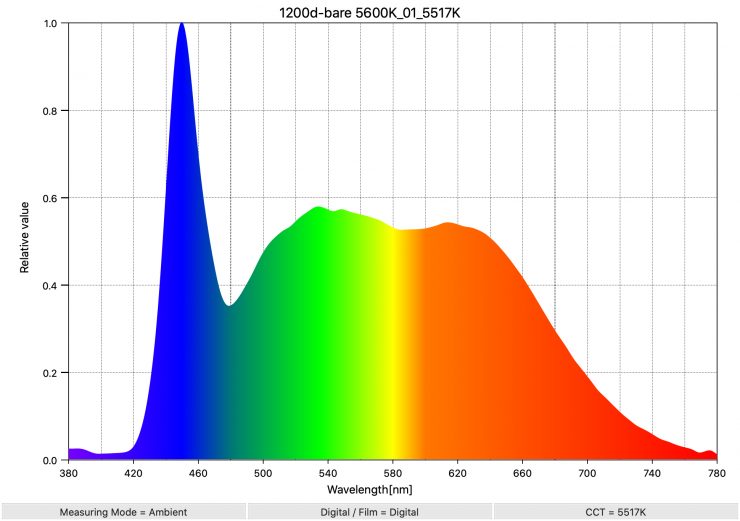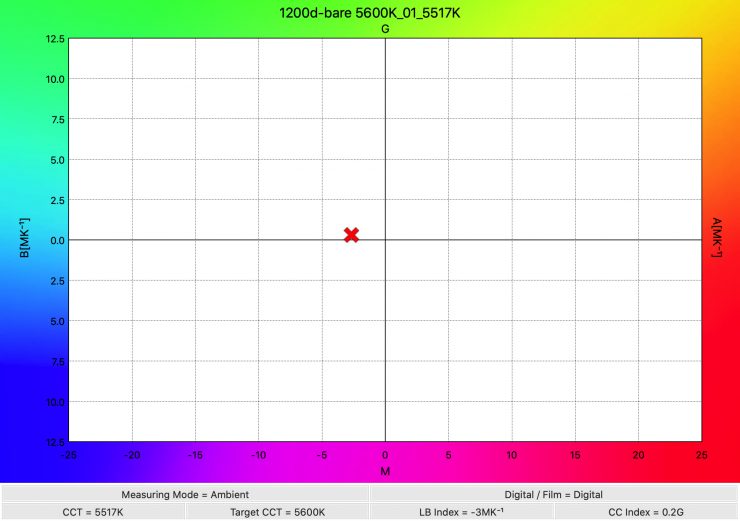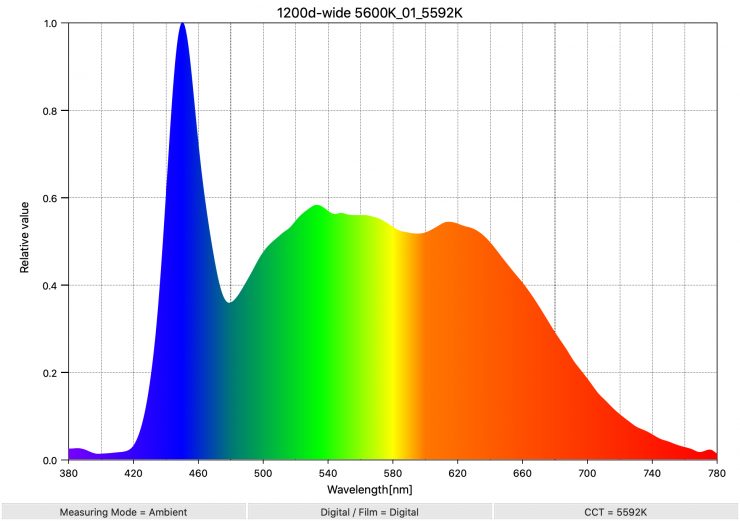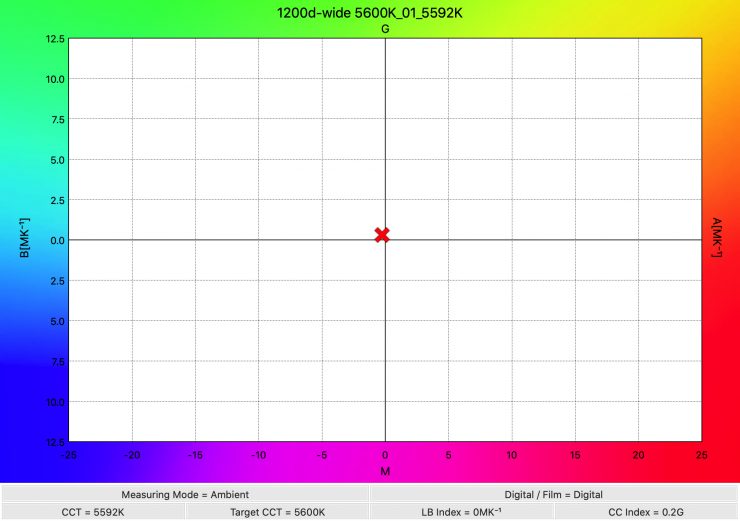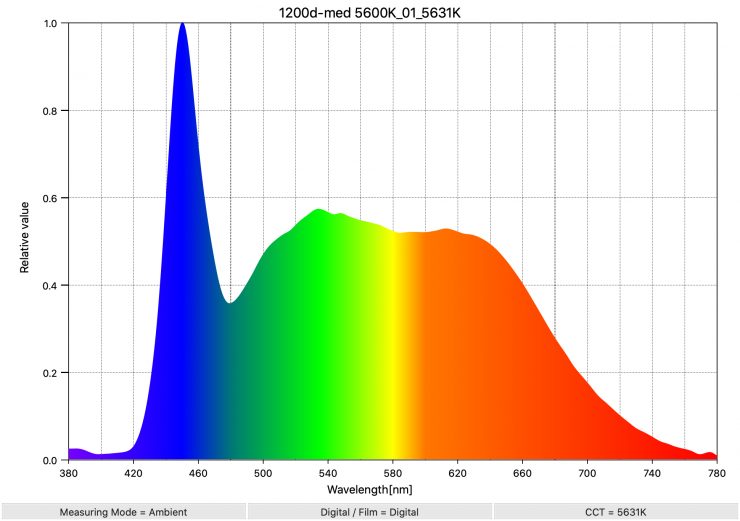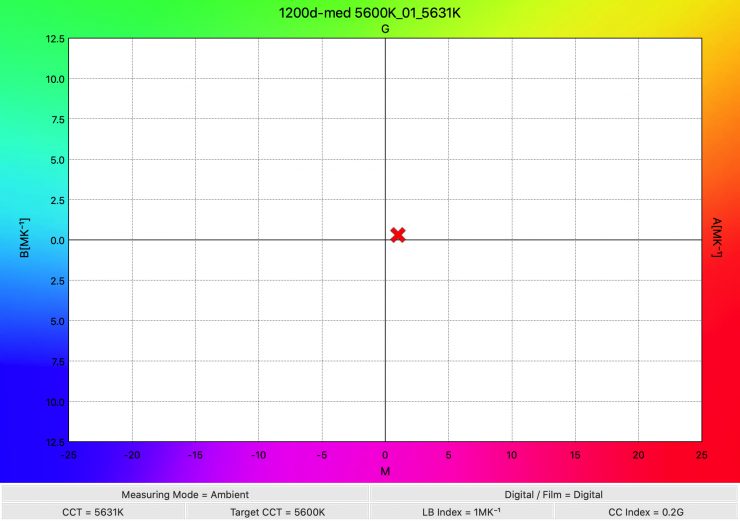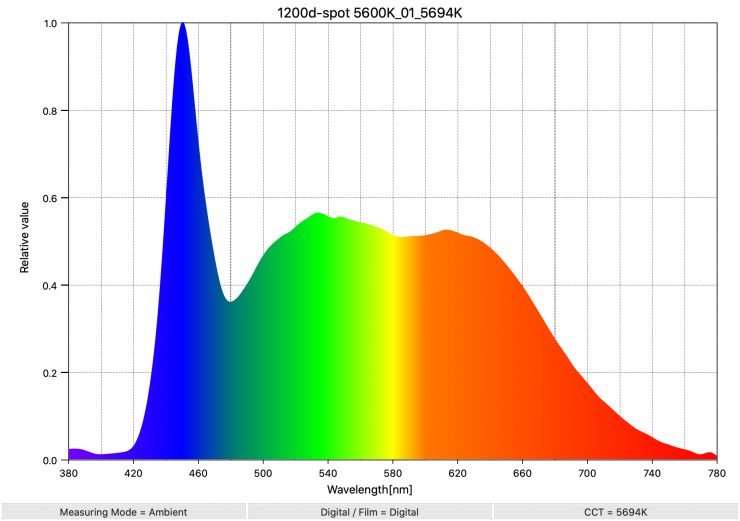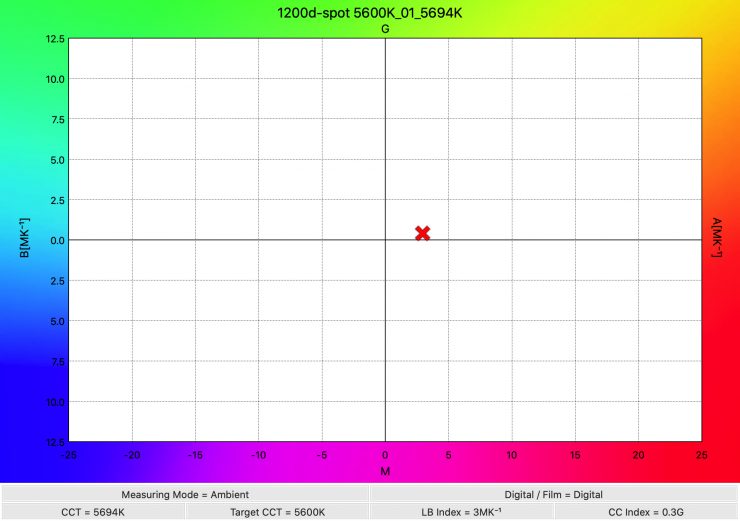
Over the years, Aputure has been building up its lighting lineup with fixtures that have high output and substantially better build quality. The Aputure Light Storm 1200d Pro is one Beefy Burrito! For many Aputure users, these new fixtures might be out of their price range, and this shouldn’t be a surprise as it’s clearly designed for situations where you need this kind of firepower. While they are much less expensive than offerings from others in this output range, they can still be considered affordable, especially when looking at high output fixtures. These would also be in the costly HMI range.
The Aputure Light Storm 1200d Pro retails for $3,390.00 and includes three Hyper Reflectors plus travel cases. This fixture kit is priced very competitively.
What’s Included
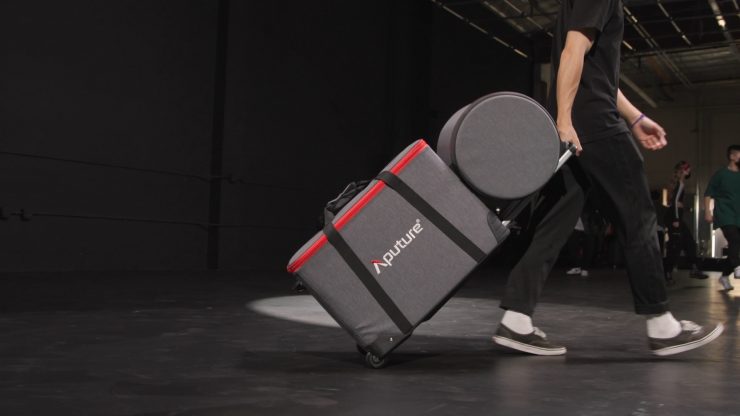
The LS 1200d Pro comes with a light, a control box, and three reflectors. This includes a rolling case for the 1200d Pro and a separate case for the other two reflectors. The complete kit is listed below.
LS 1200d Pro and Rolling Case
- LS 1200d Pro Lamp Head
- LS 1200d Pro Control Box
- LS 1200 Series Hyper Reflector 30° Medium
- LS 1200 Series 7-Pin Weatherproof Head Cable (7.5m)
- Neutrik powerCON TRUE1 TOP AC Power Cable (6m)1Lightning Clamp
- LS 1200d Pro Rolling Case
Reflector Carrying Case
- LS 1200 Series Hyper Reflector 15° Narrow
- LS 1200 Series Hyper Reflector 55° Wide
- LS 1200 Series Reflector Carrying Case
Key Aputure Light Storm 1200d Pro Features
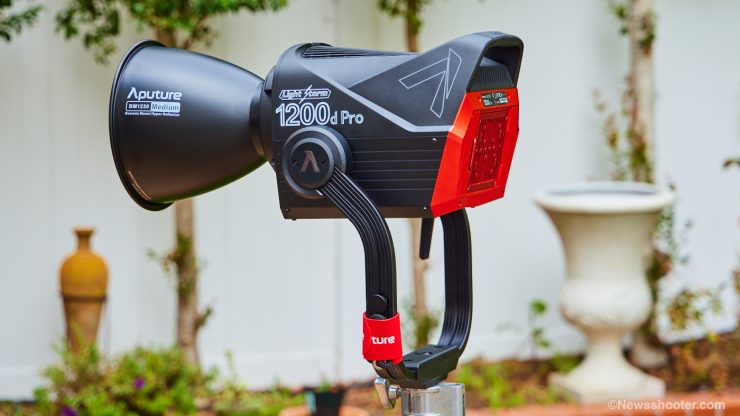
- 1200W Daylight Bowens Mount Point-Source LED
- 1440W power draw
- 5600K Daylight CCT
- Optimized Output with 3 Hyper Reflectors: Narrow (15°), Medium (30°), Wide (55° )
- Weather-Resistant: Dust & Water Resistant
- 0.1-100% Stepless Brightness Control
- Frequency Selection to Reduce Flicker
- Lead-Follow Mode for Quick Workflow
- 4-Fan Modes: Smart/Medium/High/Silent
- Multiple Control Methods: Sidus Link Bluetooth App
- Control, LumenRadio CRMX, Art-net & sACN via
- WetherCON, 5-Pin DMX512 In & Out
- Supports Dual 48V/15A DC Inputs (3-pin XLR), Including
- Battery Power Stations & Block Batteries compatible
- Half Power Output with one 48V/15A Power Source
- Full Power Output with two 48V/15A Power Sources
- Junior Pin (28mm)
- Separate Control Box for a Lighter Lamp Head
- 7.5m Weatherproof Head Cable
- 6m Locking Neutrik Power Cord
- Dual Lightning Clamp Quick Release Plates
- Curved, Disk-Brake Yoke with 360° Rotation
- Utilizes Universal Bowens Mount Standard
- 4 Dimming Curves: Linear, Exponential, Log, S-Curve
- 8 Lighting FX: Paparazzi, Fireworks, Lightning, Faulty Bulb, TV, Pulsing, Strobe, & Explosion
- Includes Rolling Case & Reflector Carrying Case
LS 1200d Pro Design
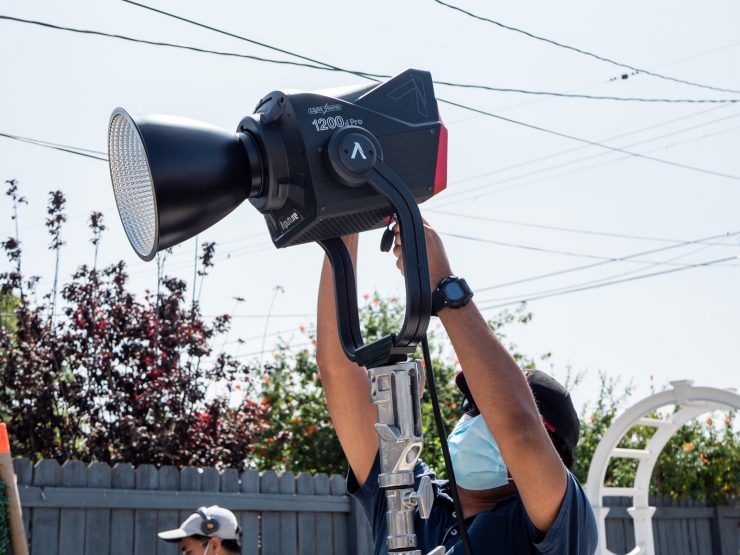
The LS 1200d features a 1200 watts COB, and it has a maximum power draw of 1440 watts. The higher power draw will make this fixture challenging to use with traditional ENG batteries. They don’t have the watts per hour and voltage required to run at full power. There are no battery plate options on the controller—more on powering the LS 1200d Pro later in the review.
The LS 1200d Pro is a solid fixture with a build that looks like it can take many years of use on set. Overall it’s well thought out. I like the more boxy shape instead of, the longer style you see with many COB lights. This beast will fit in tighter spaces due to this shape, but as soon as you put the narrow or medium Hyper Reflector on, it gets very long.
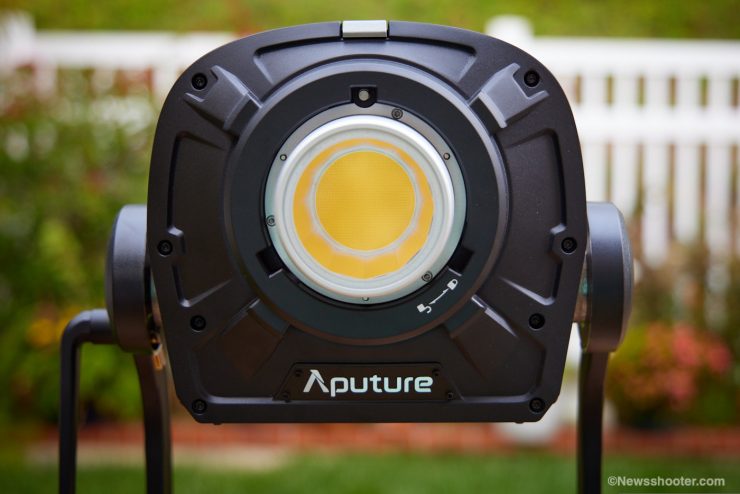
Like all the Light Storm fixtures, the LS 1200d Pro has a Bowens Mount that can be used with a wide array of Bowens Mount modifiers such as Light Domes and Lanterns, but due to its output, there are some precautions that I cover later in the review.
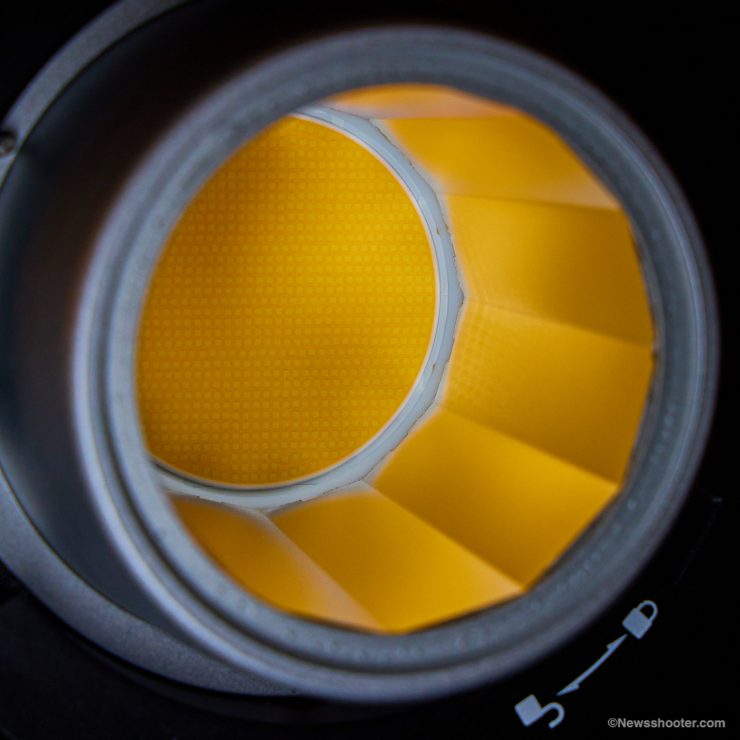
The COB is also a new design. It sits back inside a cone that protrudes out from the lamp head, and the cone has a reflective multi-flat surface around the COB cluster. It’s capped off with a glass cover.
This is very interesting as it clearly intensifies the output by reflecting the light as it emits. This reminds me of the design of tungsten lights as they use a quarter or half dome mirror behind the lamp to achieve the same effect of added intensity. Old meets new.
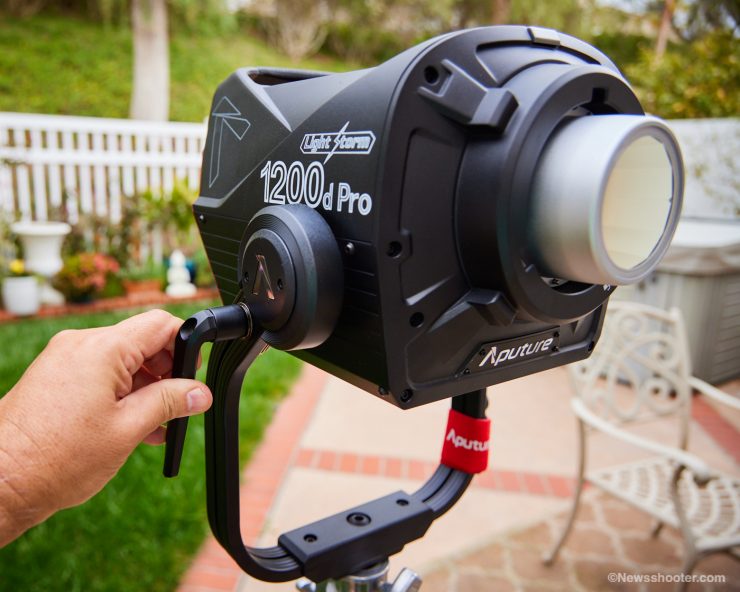
As you can see in the image above, the 1200d Pro is boxier than the 600d Pro. I would imagine this helps make the light easier to work in tighter locations and cooling.
The lockdown knob is excellent and large. It uses a single break that makes it fast and easy to tilt and lock.
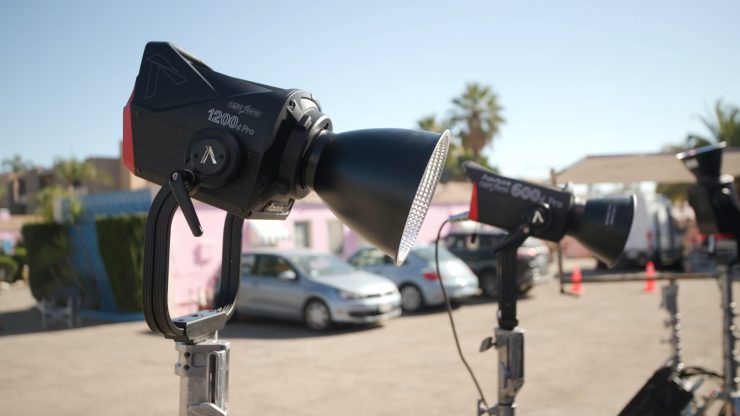
The yoke is tall, allowing the fixture to rotate down with the medium and wide reflector on. The
New Bowens Mount Hyper Reflectors
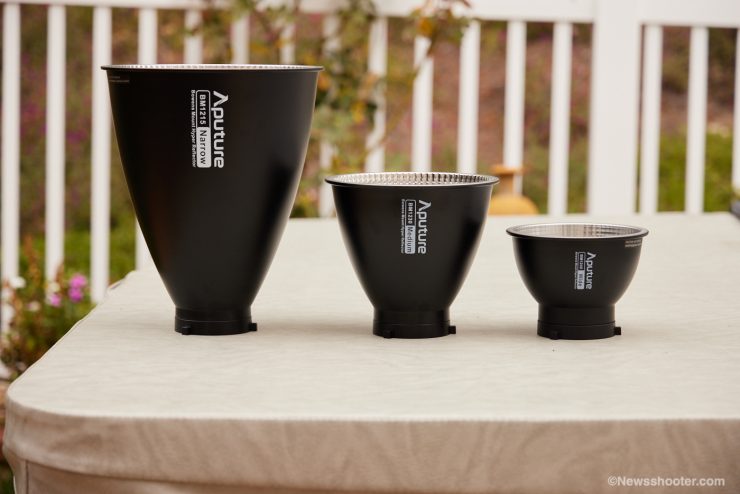

Aputure Light Storm 1200d Pro Hyper Reflector Kit 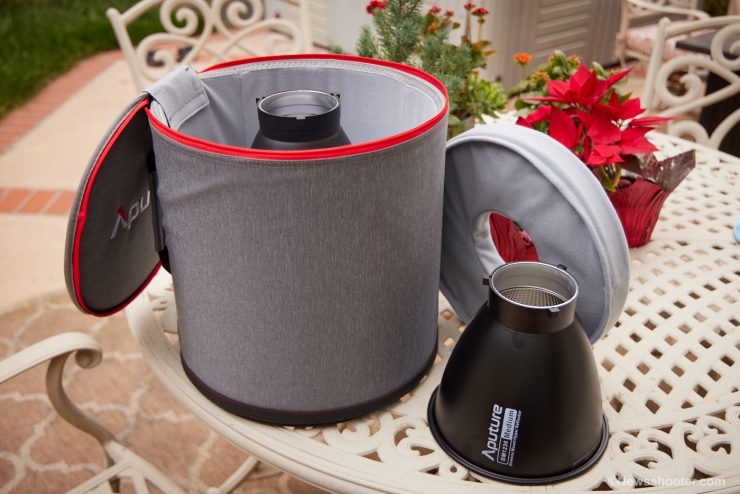
Unlike the other Light Storm lights, the Light Storm 1200d Pro Ships with three new Bowens Mount Hyper Reflectors with varying beam angles. It comes in its own case, and the included case for the LS 1200d Pro has a slot available for one.
- 15° Narrow
- 30° Medium
- 55° Wide
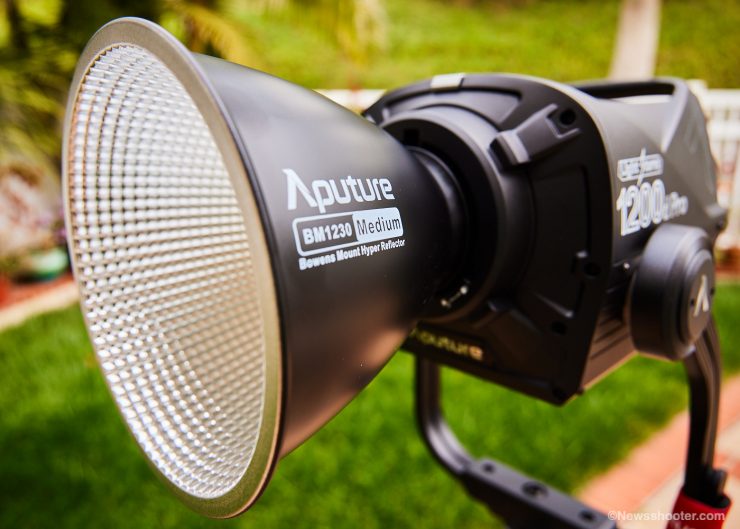
If you are familiar with COB reflectors, you can see Aputure has changed to a more intense beam design lately. The shiny raised pattern interior is the key to adding more output and shaping the light with the three different reflectors’ sizes and lengths.
When looking for a hard light using the LS 1200d Pro, it’s an excellent way to achieve it. It won’t be a fresnel in cutting the light with barn doors, but it sure works to bring that very wide bare COB in some control.
Hyper Reflector Look
When it comes to these types of “hyper reflectors”, they tend to have a hot spot in the middle. Here is a test to show how the reflectors look from 3 meters.
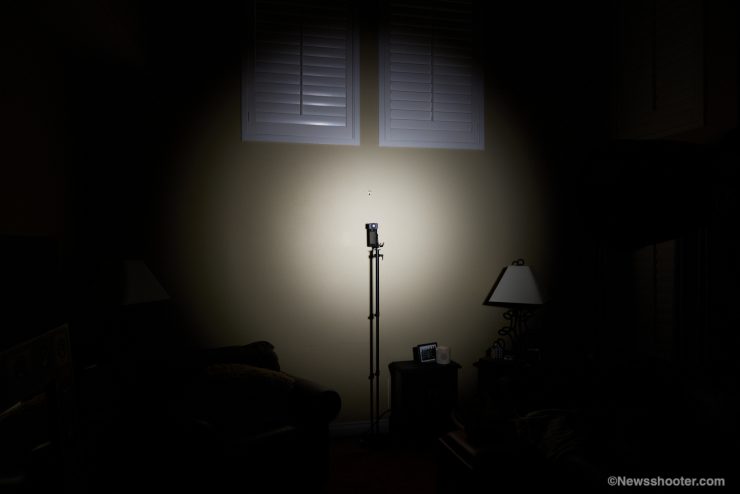
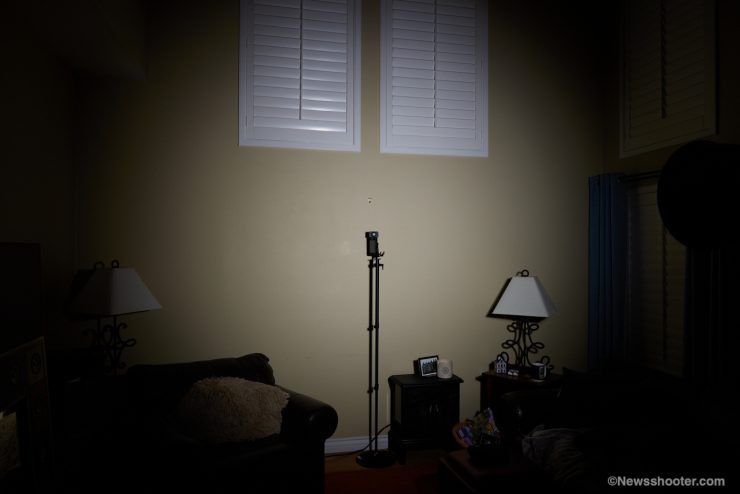
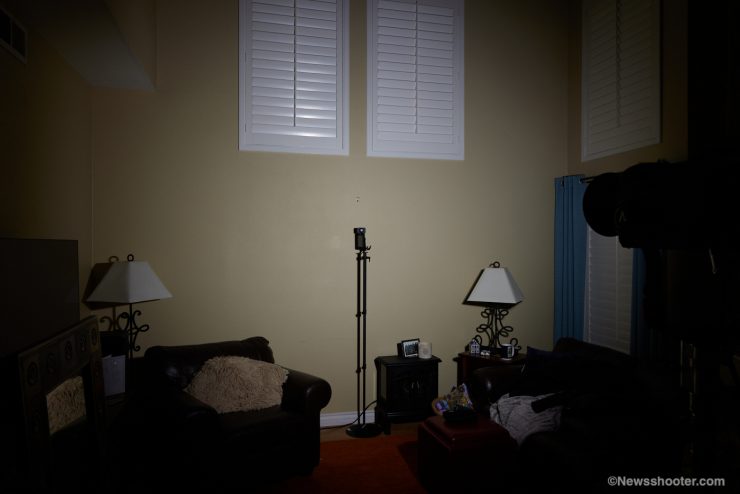
As you can see the narrow version has a pretty strong hot spot and improves with the Medium and Wide versions.
Build Quality
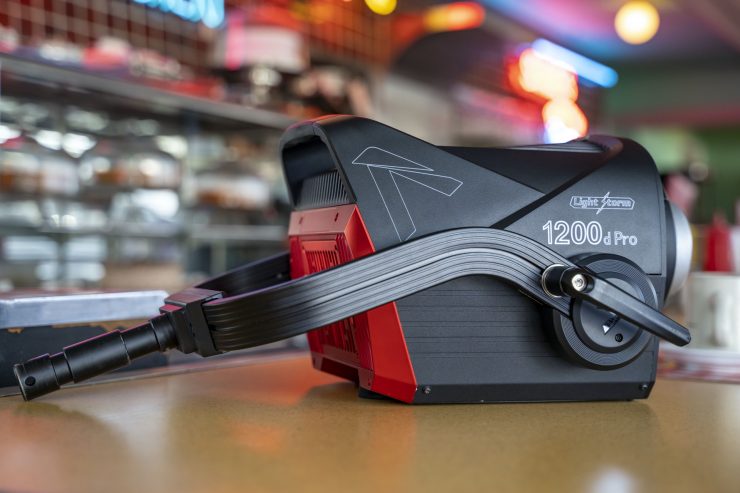
The LS 1200d Pro fixture is aimed at the pro/rental market that requires a better build quality. The LS 1200d Pro has a weather-resistant construction to withstand inclement weather. There are no controls on the light fixture. All controls are located on the controller/ballast.
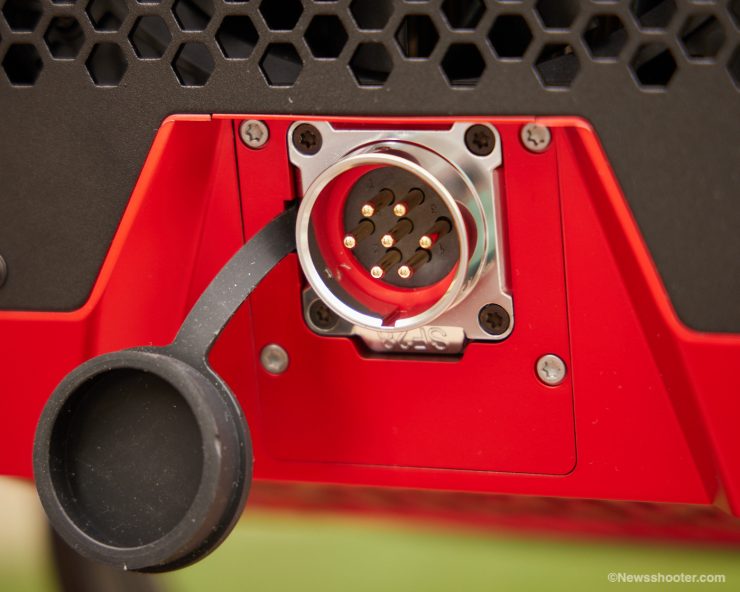
The lamp head input is also robust and has a locking connector with a rubber cap to protect it when not being used.
Size & weight
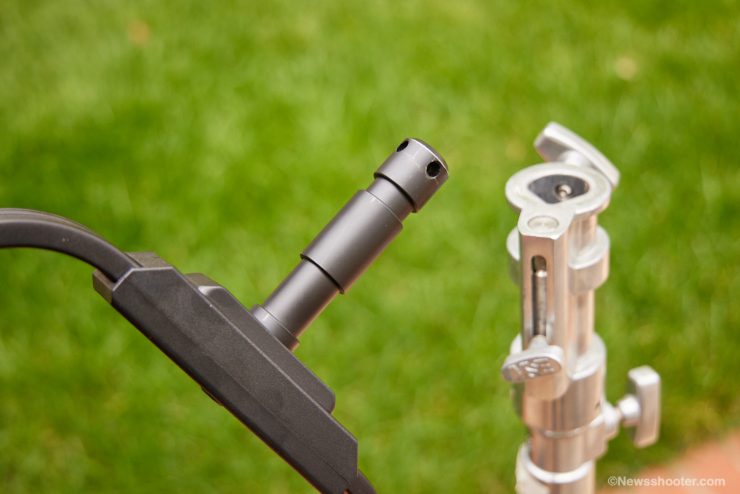
The fixture uses a Junior Pin for mounting and requires a combo light stand.
The light with yoke comes in at 19.73 lbs / 8.94 kg. Yes, it’s a beast—no light-duty stands for this one. For many, the requirement of a combo stand will potentially turn them away as these stands tend to be more expensive and are much heavier. The yoke is robust and doesn’t flex.
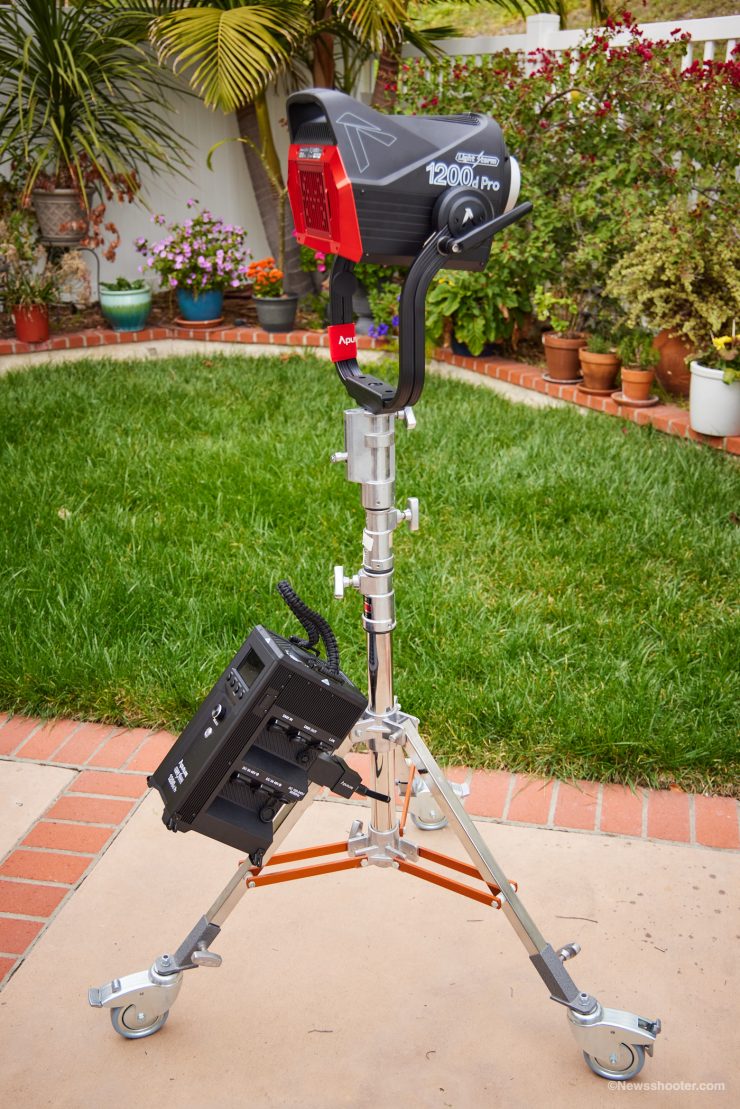
The Matthews Low Boy Double Riser Combo Stand retails for $278 USD. It has a max height of 6.4′ and weighs 16 lb / 7 kg, and can support up to 72 lb / 33 kg. I love this stand a lot. I added wheels to it when I needed to move it around in a studio. To be honest, those wheels haven’t come off since I installed them. It’s one of the more compact models.
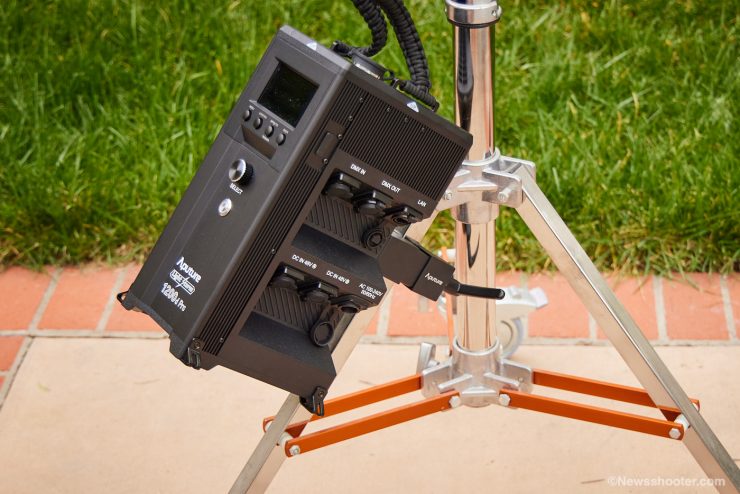
Moving the LS 1200d Pro on a stand takes some strength, especially if you have the 13 lb / 5.93 kg controller attached to the stand with the included clamp adapter.
Speaking of the controller it. The kit includes an awesome clamp with a quick release. It fits nicely on the leg of the combo stand, or when extended, it will work on the stand itself. I like it on the leg as it helps with stability, and it’s easier to see the menu and settings as it’s tilted a bit.
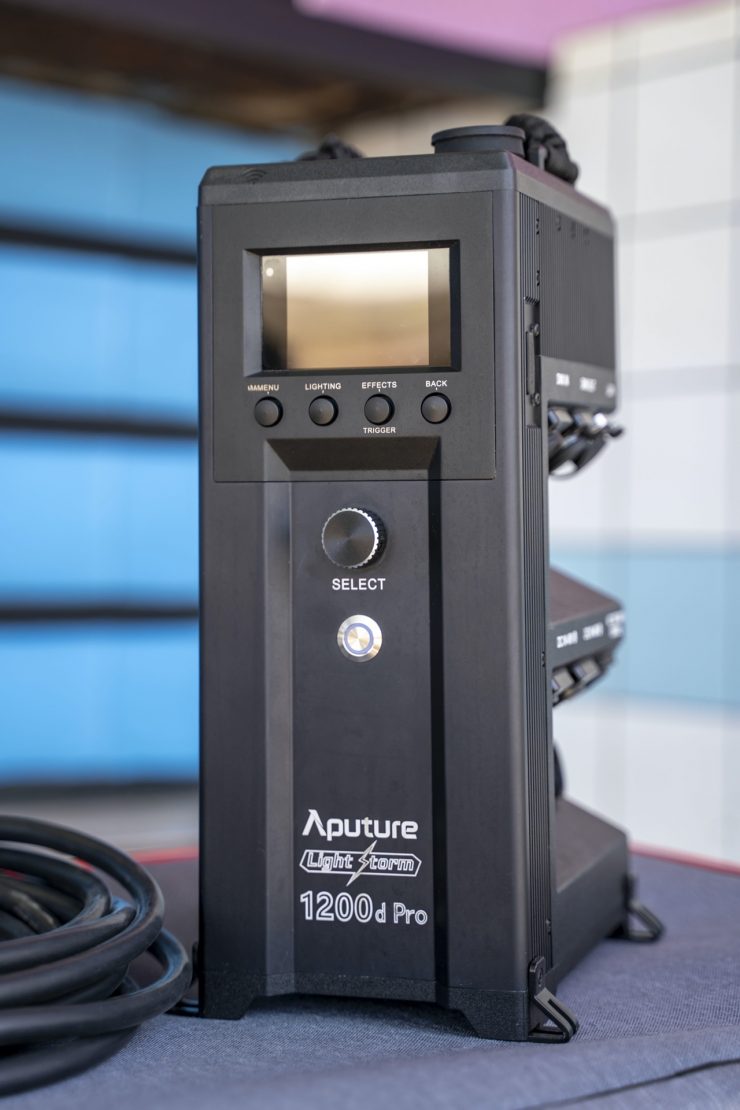

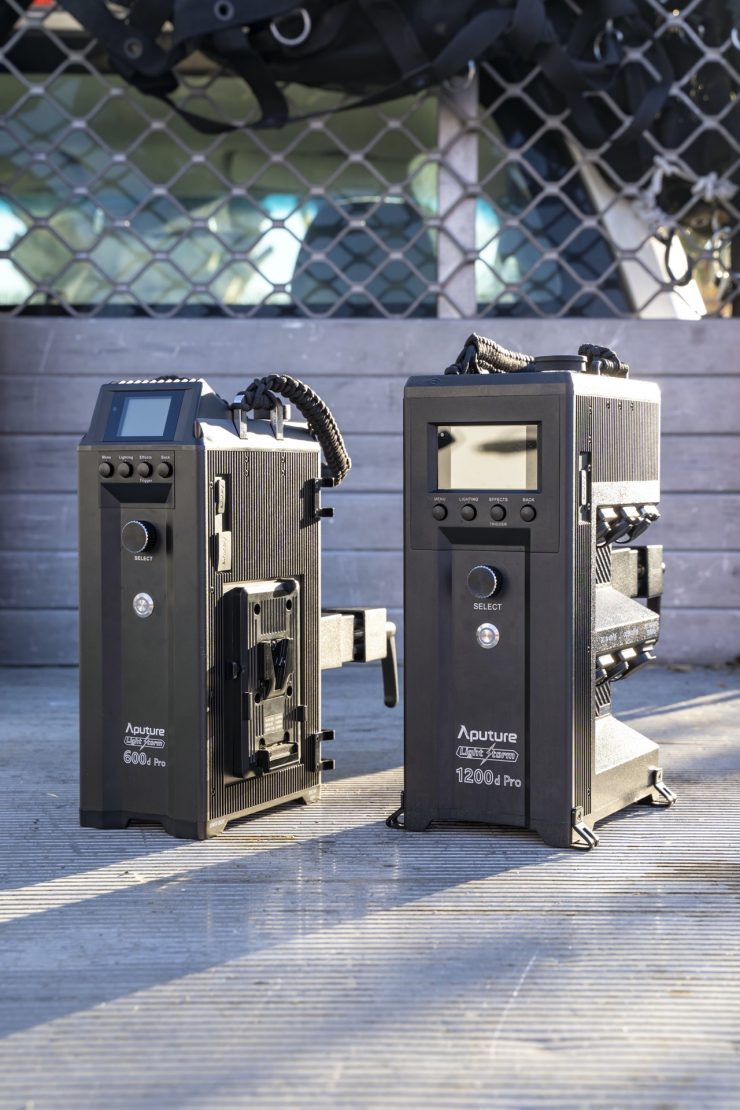
600d and 1200d Pro side by side 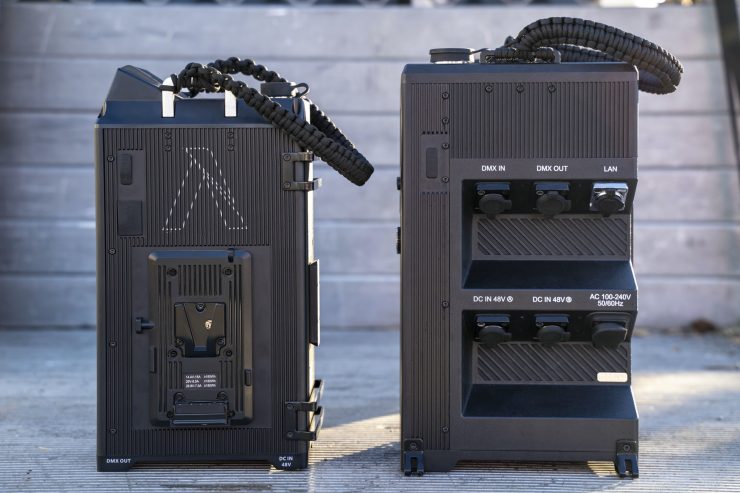
The controller has two quick-release positions since no battery plate is on the side.
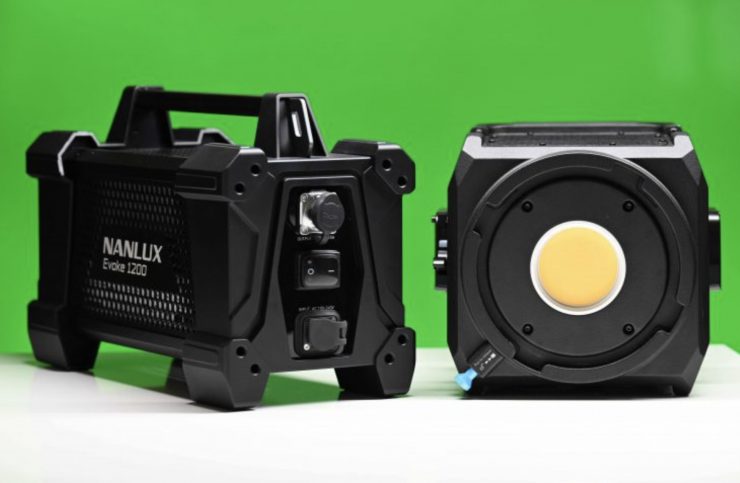

Nanlux Evoke 1200 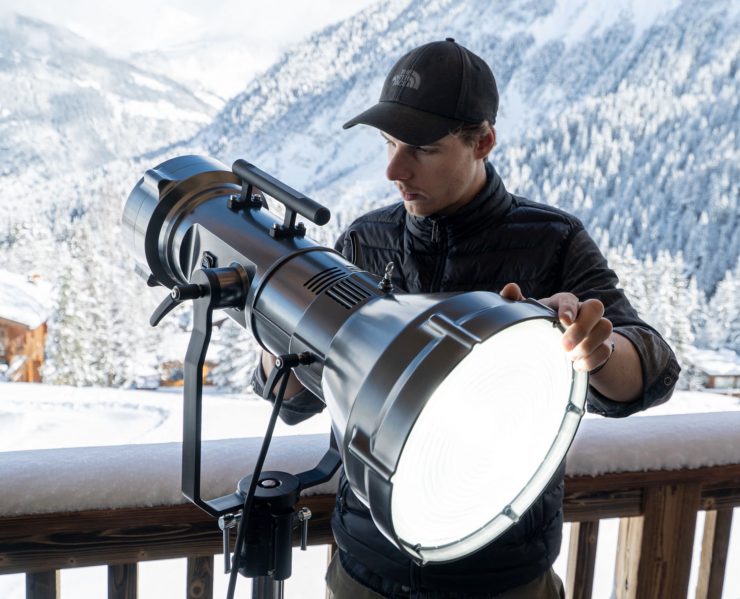
Maxima 7 & Maxima 7 Fresnel Lens 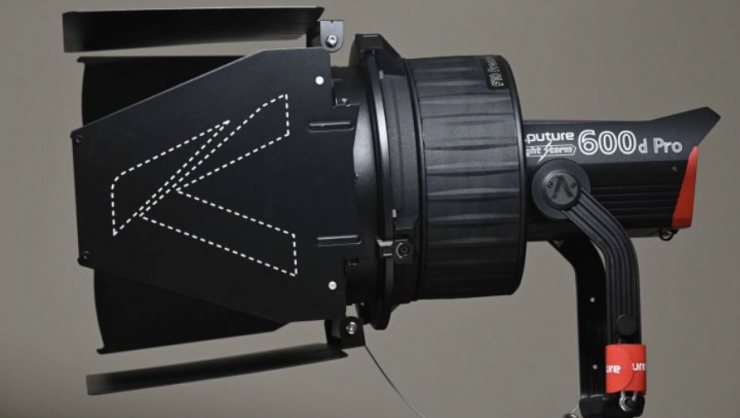
Aputure LS 600d Pro & F10 Fresnel
How does the weight of the LS 1200d Pro compare to other similar style LED lights such as the Nanlux Evoke 1200 and fixtures that don’t draw as much power, such as the 700W Maxima 7 and the 720W Aputure LS 600d Pro? Below you can see.
| TOTAL WEIGHT LIGHT HEAD & POWER SUPPLY | |
| Aputure LS 1200d Pro | 14.75kg (including yoke) |
| Nanlux Evoke 1200 | 19.28 kg (including yoke) |
| Nanlux Evoke 1200 & F-35 Fresnel | 28.33kg (including yoke) |
| Maxima 7 | 8.7kg |
| Maxima 7 & Maxima 7 Fresnel | 9.9kg |
| Aputure LS 600d Pro | 10.44kg (including yoke) |
| Aputure LS 600d Pro & F10 Fresnel | 14.29kg (including yoke) |
The Aputure LS 1200d Pro is 4.53kw lighter than the Evoke 1200, and it weighs almost the same as an LS 600d Pro with the F10 Fresnel attached.
So, how does the weight of the LS 1200d Pro compare to some 1200W HMI fixtures? Let’s take a look.
| TOTAL WEIGHT LIGHT HEAD & POWER SUPPLY | |
| Aputure LS 1200d Pro | 14.87kg (including yoke) |
| Mole-Richardson Molepar 1200W HMI1-light Kit (90-260 VAC) | 30.4kg |
| Mole-Richardson 1200 Watt HMI Fresnel Solarspot | 9.2kg |
| CAME-TV 1,200W HMI Fresnel Light Kit with Electronic Ballast | 20kg |
| ARRI True Blue D12 HMI 1200W Fresnel kit with Ballast | 18kg |
With these weight comparisons, it is important to remember that the Aputure LS 1200d Pro isn’t an HMI Fresnel.
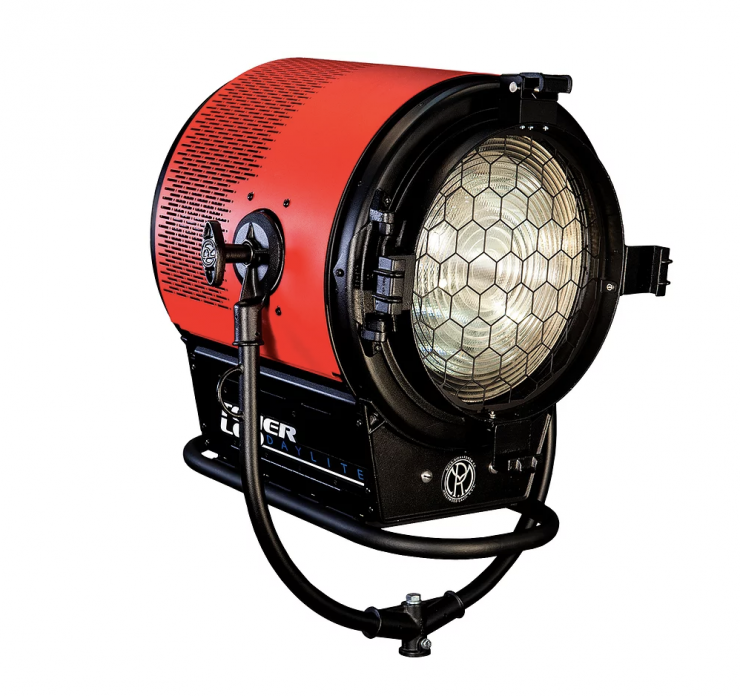
As another comparison, the Mole-Richardson 1600W Tener LED (Daylight) tips the scales at 31.80 kg. Yes, this is a higher power draw (1600W) LED light, but it does provide a good comparison against the Aputure LS 1200d Pro.
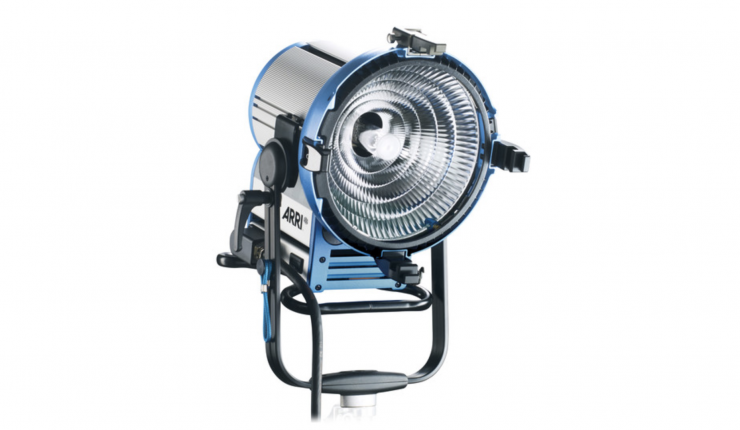
How does the weight of the 1200d Pro compare to a light such as the ARRI M18? Below you can see:
| TOTAL WEIGHT LIGHT HEAD & POWER SUPPLY | |
| Aputure LS 1200d Pro | 14.87kg (including yoke) |
| ARRI M18 & EB MAX High Speed Electronic Ballast | 18.5kg (including yoke) |
There is only around a 3kg difference in weight if you compare the LS 1200d Pro to an M18. However, you also need to remember that the M18 is an HMI Fresnel, and the Aputure is not.
The Aputure LS 1200d Pro will be a bit lighter than some HMI Fresnel fixtures with a similar output.
Power Draw
The light draws 1440W, which is a lot; however, it can still be run via any household AC outlet. If you wanted to use a traditional HMI that would give you a similar output to the LS 1200d Pro, you would have to use something like a 1.8K, 2K, or 2.5K. Once you get above 1800W, you can’t run a light off a household AC outlet. This is one of the most significant advantages a light like the LS 1200d has over some older fixtures.
| POWER DRAW | |
| Aputure LS 1200d Pro | 1440W |
| Nanlux Evoke 1200 | 1200W |
The LS 1200d Pro does draw more power than its closest competitor, the Nanlux Evoke 1200. This is a bit of shame, as powering a 1440W fixture with batteries is more difficult.
Controller & Powering Options
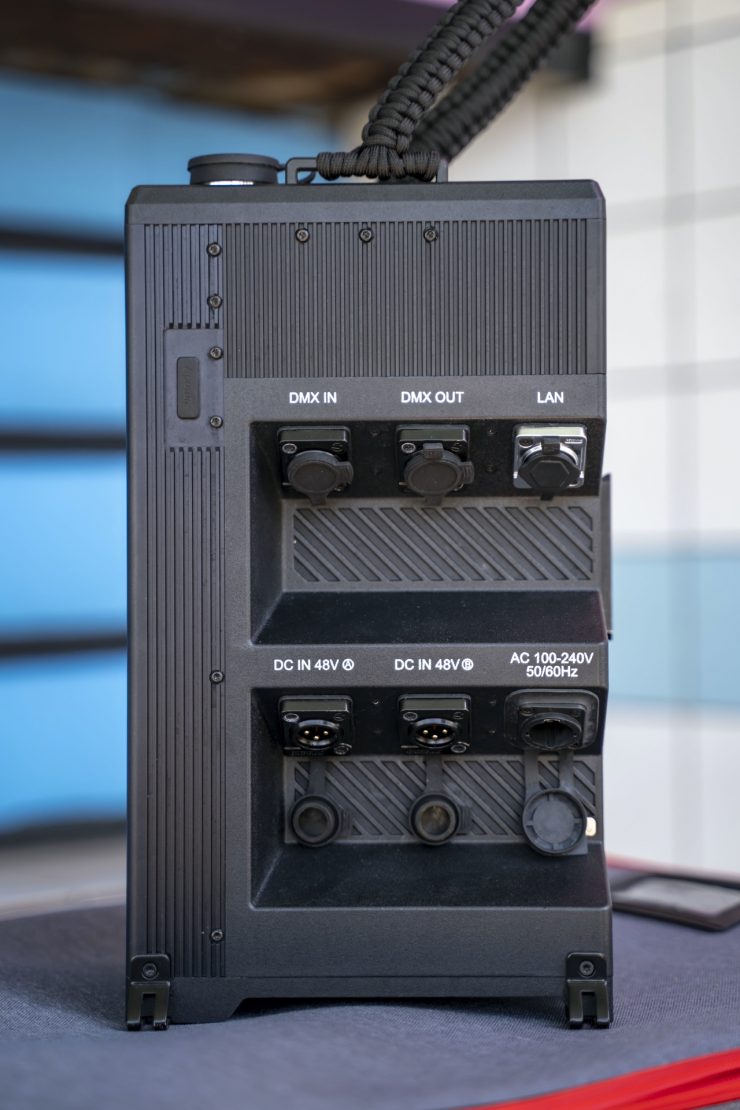
All but one input/outputs are on one side of the controller. On top of the controller is the primary lamp head input. This is an improvement over the 600d Pro that has connectors on the bottom, so you can’t have it standing up.
Battery Options
The LS 1200d Pro doesn’t have a Gold or V-mount option for battery power. Two 48V/15A DC inputs take power from a battery block. Keep in mind it will need a substantial battery block or two of them for full power for a nominal time. You can use one DC input and get 50% output from the light. I do feel this option is good planning for future-proofing as battery technology is getting better fast. Before you know it 3000w batteries will be the norm.
Battery Blocks are costly, and the capacity, size, and cost will all improve, but today, a 48v battery block capable of powering one 1200d Pro will put you back a few thousand dollars. A gas generator/inverter is a better option. The issue is the 1440W power draw. You have to have a battery block that supports that 1440w power draw.
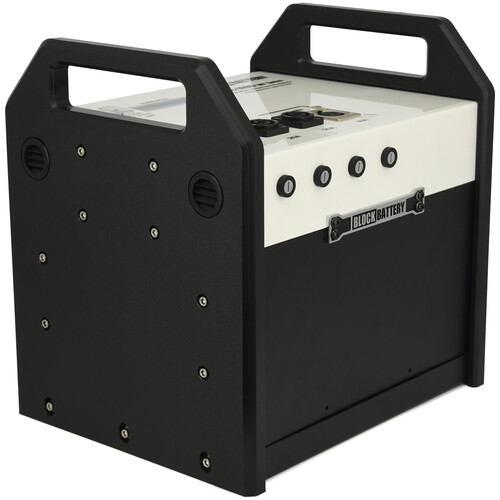
This BlockBattery HCL-1600 1648Wh Multi-Voltage Lithium-Ion Battery Power Station does support the 1440W power draw of the LS 120d Pro with its 1648Wh capacity. You can run the light for a little over an hour for a whopping $4,345.00
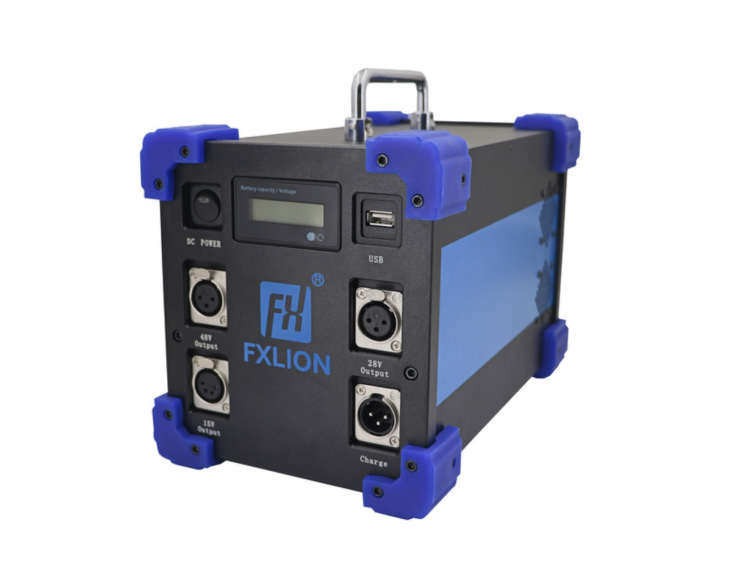
One advantage of a 1200w power draw fixture is you have a few more options, but it’s still expensive. Take the $3,050.00 Fxlion 1232Wh 15/28/48V Lithium-Ion Mega Battery. This is something you could do with the Nanlux Evoke 1200 as it only draws 1200W.
Going Mobile
I’ve always wanted a gas generator/inverter in case we lose power at the house or go camping on that rare occasion. I also want the station I work at to buy one since I shoot our news anchors outdoors in the sun a lot. Using lights along with the overhead scrims would be fantastic, so I researched if a more affordable option exists and found a few that are a lot less expensive than the tried and true Honda EU2200i that cost $1300. This unit is pretty quiet. That is why it’s so popular for use in video and film production. The Honda operates at 42 to 50 dBA.
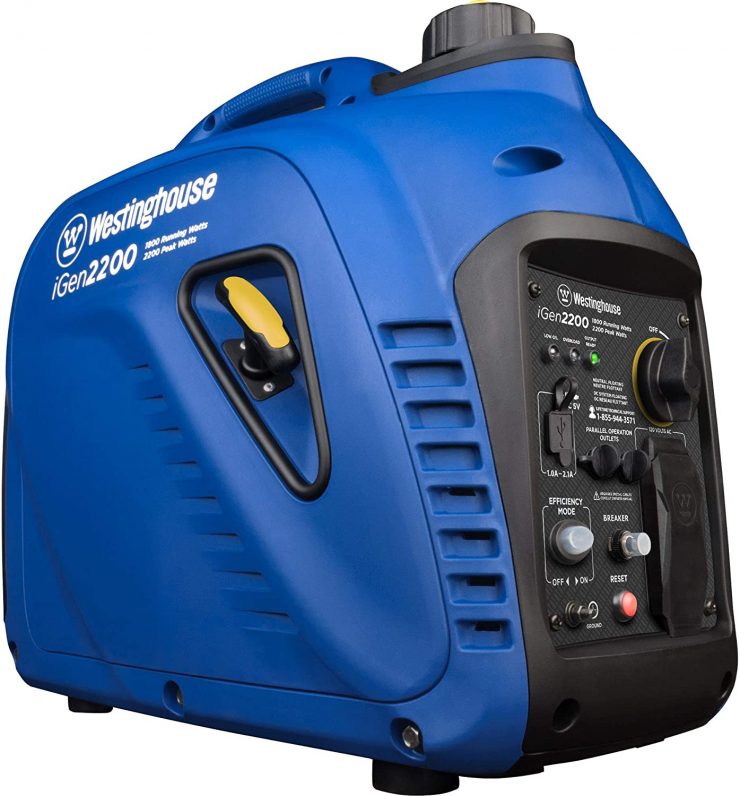
One I’m interested in is the Westinghouse iGen2200 gas generator/inverter. It’s rated at 1800 Watts and 2200 Peak Watts. It should work great with the LS 1200d Pro (maximum power draw of 1440 watts) and an LS 300 (350-watt power draw) or LS 600d Pro (750-watt power draw). Just as long as you stay under at or 2200 peak watts, it will be fine. The iGen2200 is rated at 52 dBA.
Keeping it Cool
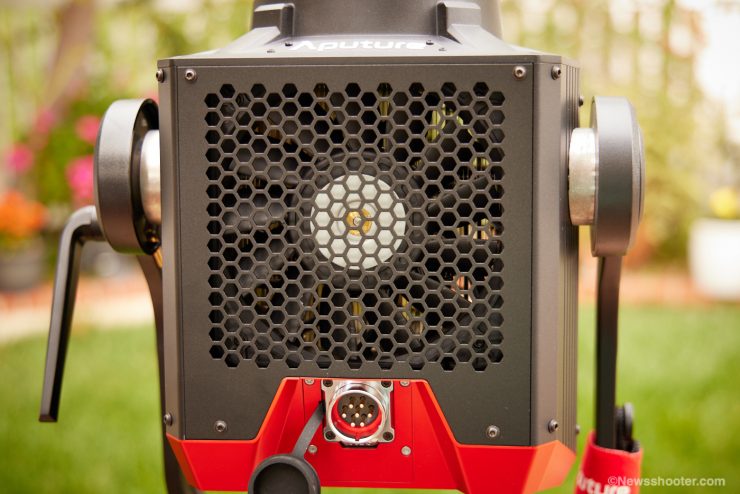
To keep the fixture cool, it uses two fans and what looks like cooling fins inside and on top of the lamp head. It has one fan on the bottom and one on the back. It should be no surprise the fans make some noise as the fixture generates a lot of heat.
Fan Speeds
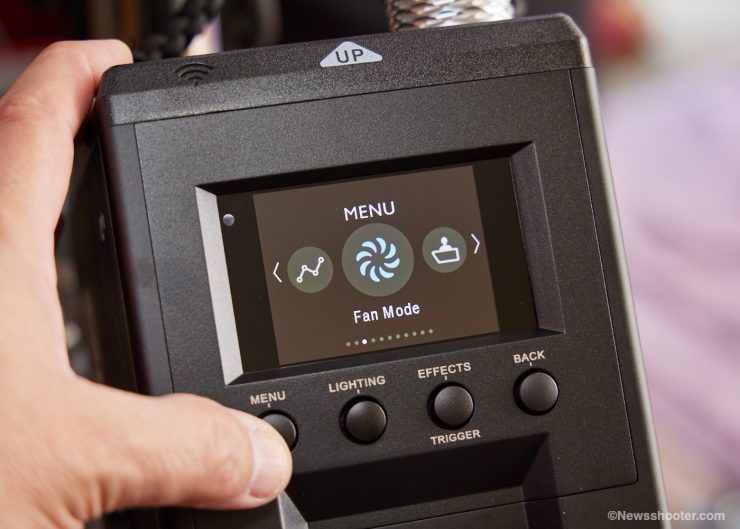
Speaking of keeping it cool. The Light Storm 1200d Pro has 4-Fan Modes. This takes advantage of keeping the noise down when operating either at max power or in warm environments. I like having this option as fan noise can be hard to deal with when recording audio; however, with a fixture this bright, I doubt it will next to talent very often, but you never know, and the ability to control it is fantastic.
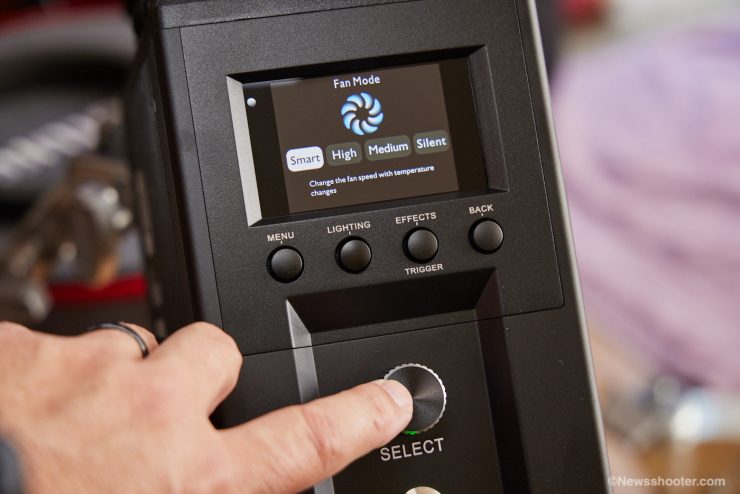
- Smart: Fan speed is according to temperature up to 45° C / 113°F
- Medium: Standard recommended fan speed. Suitable for Environments from 35°C / 95°F
- High: Environments from 35°C – 45°C / 95°F – 113°F
- Silent: Deactivates all fans but limits output to 100W
Fan Noise
No getting around it. With a high-power COB and two fans to keep it cool, you will have to deal with fan noise. I used a decibel meter to see how much noise the lamp head puts out. I first took an ambient room test, turned the fixture on, and took another reading from one and three meters.
For reference, a whisper is about 30 dBA, and normal conversation is about 60 dBA.
Fan Set To Medium
Ambient Room Level = 34.3 dBA
LS 1200d Pro from 1-meter = 38.7 dBA
LS 1200d Pro from 3-meters = 36.8 dBA
Fan Set To High
Ambient Room Level = 34.3 dBA
LS 1200d Pro from 1-meter = 43.8 dBA
LS 1200d Pro from 3-meters = 40.3 dBA
The fan tone is lower-pitched and doesn’t whine or change in tone at different fan speeds. I feel that microphones in the 5-meter zone could be an issue, but this depends on what else is going on in the area. For closer proximity to microphones, an LS 600 or other lesser output lights will be a better choice as they don’t have near as much fan noise.
In Smart mode running at 100%, I found that the LS 1200d Pro stayed in Medium. This setting is the recommended fan speed for environments from 35°C / 95°F.
Is this an issue? It could be. You have to accept this, similar to the junior pin that requires a combo stand. These are things that come with fixtures with such high wattage and output.
How Hot Does The Lamp Get?
Good question! One of the first things I noticed when changing the reflectors is they were toasty! I grab a glove to make sure my digits get that burning feeling. This isn’t something I have to do anymore since all my production lights are all LED.
I pulled out an infrared thermometer to see just how hot the lamp and reflectors get at 100%. With the wide reflector attached, the front inside temp was 150° while the outside of the reflector was 138°.
The outside of the lamp head doesn’t get very hot. I was surprised by how well the cooling system works. I can easily loosen the tilt lock and grab the top handle. The handle was 80°, and the front of the lamp near the Bowens mount was 118°. This is with the light at 100% and powered on for 30 minutes inside my home with an ambient temperature of 68°.
Menu System
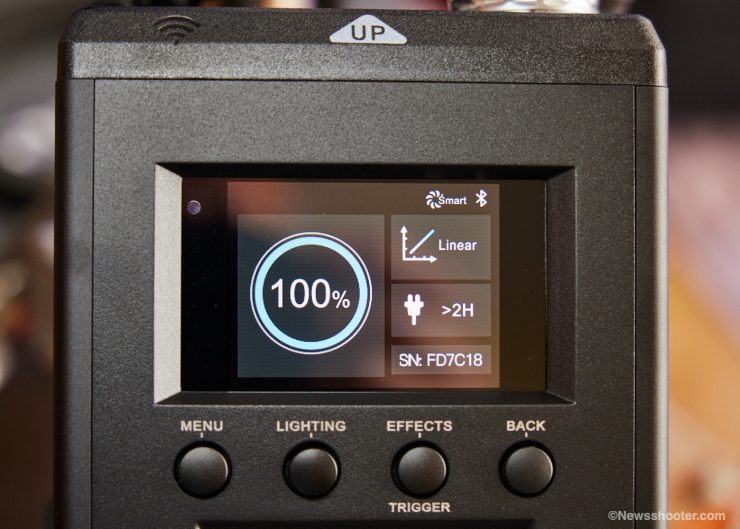
If you have used the 300d Pro or 600d Pro, the controller has a similar look and feel to it. It’s straightforward to navigate and change settings. It includes a 0.1-100% stepless brightness control that helps precisely dial in the output you need. I like this a lot.
Speaking of the controller it. The kit includes an awesome clamp with a quick release. It fits nicely on the leg of the combo stand, or when extended, it will work on the stand itself. I like it on the leg as it helps with stability, and it’s easier to see the menu and settings as it’s tilted a bit.
The controller has two quick-release positions since no battery plate is on the side.



600d and 1200d Pro side by side 
The 1200d Pro uses Lumenradio CRMX and Art-net & sACN via an etherCON connector, in addition to the 5-Pin DMX512 ports, to seamlessly integrate into any professional DMX interface.
Connectivity
Its connectivity is designed with lighting technicians in mind. The LS 1200d Pro uses Lumenradio CRMX and Art-net & sACN via an etherCON connector, in addition to the 5-Pin DMX512 ports, to seamlessly integrate into any professional DMX interface.
Output
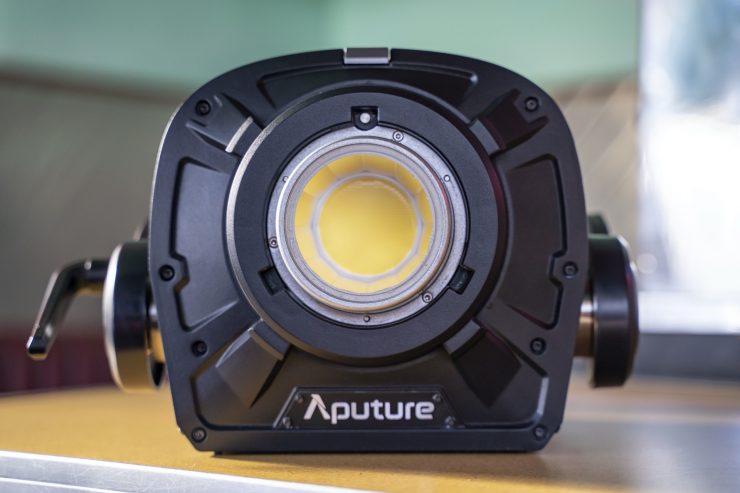
COB lights are kicking it up a notch with higher output and fresnel accessories to tame those COB clusters. 1440 watts is a lot of power, and keeping it from catching on fire has to be one of the biggest challenges without having a giant loud fan running.
Photometrics
To test the output, I used a Sekonic C-700U from 3-meters. Due to space issues, I wasn’t able to test from 5-meters. For reference, I added the inverse square law calculation for 5m. To keep things consistent, I left the fixture in the same position, changed the reflectors, and took the readings.
| CCT | Distance | Bare Bulb | Hyper 15° Reflector | Hyper 30° Reflector | Hyper 55° Reflector |
| 5600K | 3M | 6,590 lux | 73,5000 lux | 22,200 lux | 13,300 lux |
| 5600K | 5M | 2,372 lux | 26,460 lux | 7.992 lux | 4,788 lux |
Important to note that there is a hot spot, and the output drops as you go out to the beam’s edges. The 15° Reflector is much more noticeable while the wide is less.

Below, you can see Matt’s output results when using the Nanlux Evoke 1200.
| CCT | Distance | Bare Bulb | F-35 fresnel 11° | F-35 Fresnel 45° | Reflector 45° beam angle |
| 5600K | 3M | 4,484 lux | 46,666 lux | 14,100 lux | 16,000 lux |
| 5600K | 5M | 1616 lux | 16,800 lux | 5,076 lux | 5,760 lux |
The Evoke 1200 actually has more output than the Aputure LS 1200d Pro when both are used with their 45° and 55° reflectors respectively.
So what about if we compare it to an HMI light like the ARRI M18?
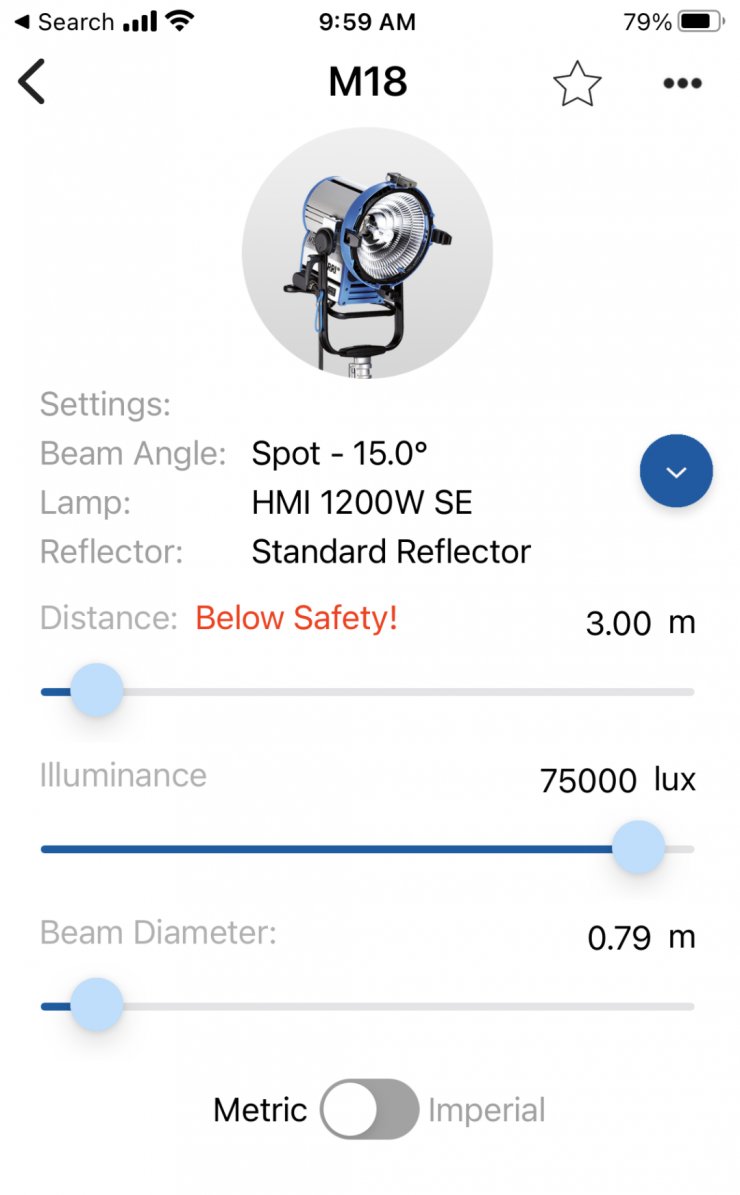
As a comparison, an ARRI M18 and HMI 1200W SE, when used at 15 degrees, puts out around 75,000 lx at 3m.
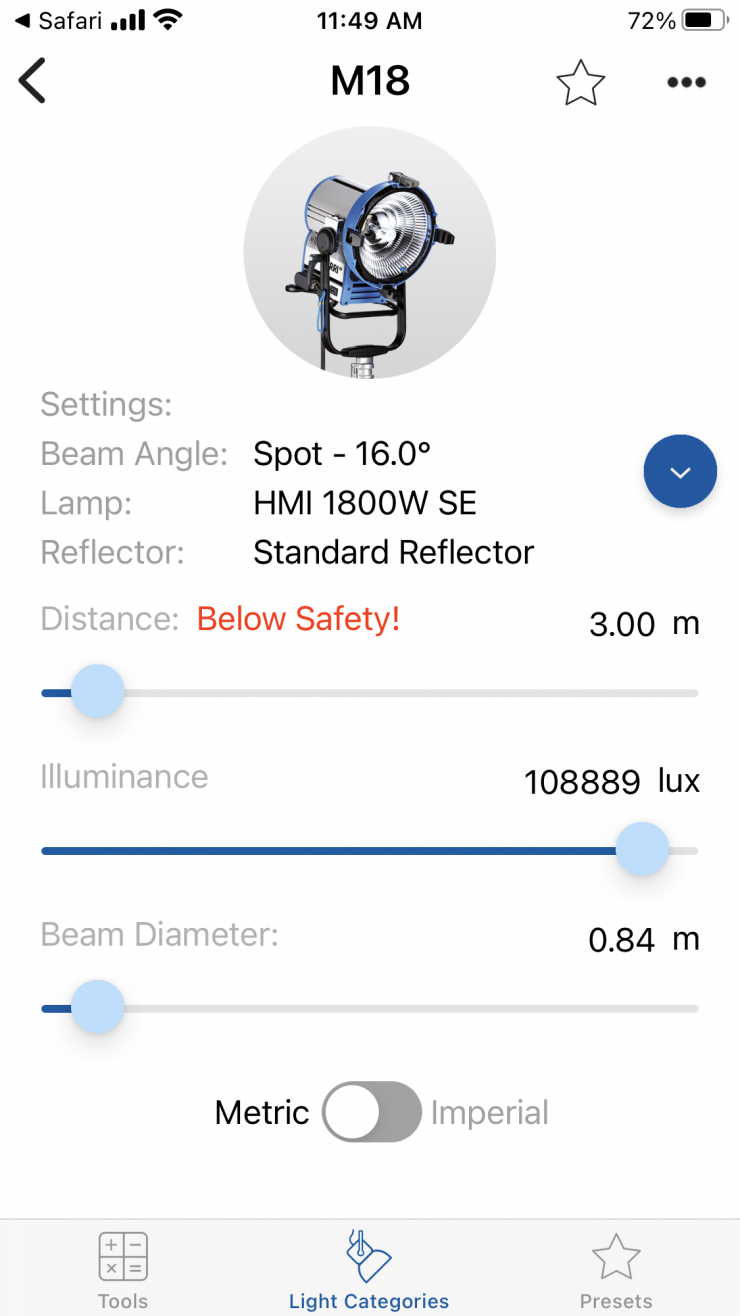
Ok, what about using a 1800W lamp bulb in the ARRI M18? Well, as you can see, the output at 3m when used at 16 degrees is 108,889 lx.
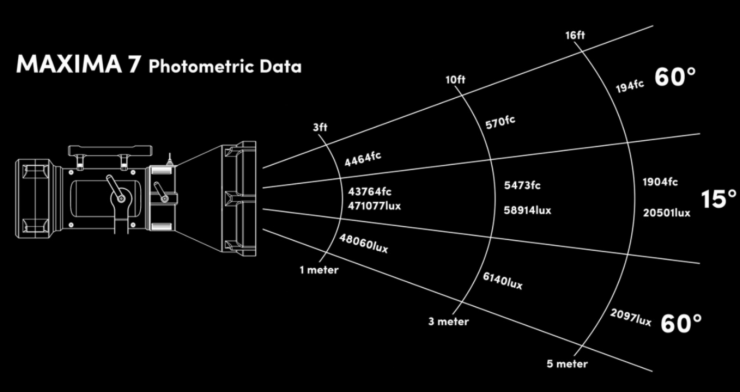
The Maxima 7 and Maxima 7 Fresnel Lens, when set at 15°, has a claimed output of 58,914 lux at 3m.
If you want to compare a more affordable light, the Aputure LS 600d Pro and F10 Fresnel, when set at 15°, put out 31,700 lx at a distance of 3 meters. At 11°.
Outside Test
With all this talk about output I wanted to see how well it would work on a bright sunny day. Sorry about the talent. He was all I could find 
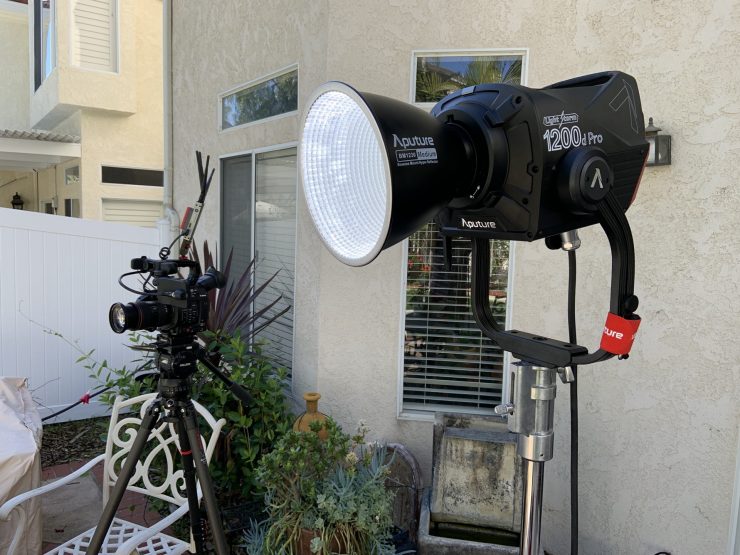
I used the Canon C200 with 24-70mm set at F2.8, ISO 400, and ND at 6-stops. The White Balance is set to 5600k.
The Aputure Light Storm 1200d Pro was set at 100% with the Medium reflector and is 11 feet / 3.35 meters from the so-called talent.
The sun is on camera right and is very bright. To diffuse it I used a Chimera frame and Chimera Full Cloth diffusion. Side note. I love this diffusion setup. The frame is very fast to set up and is light in weight and uses any brand diffusion since that has elastic on the corner to attach to the frame. I highly recommend the 6×6 version as well for the same reasons.
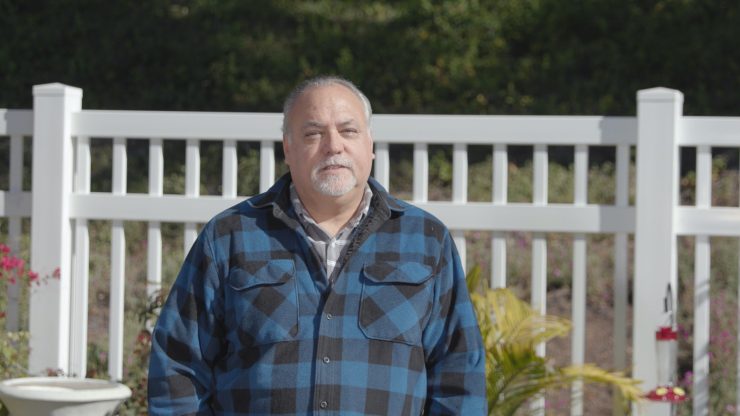
The above frame grab is what it looks like just outside the diffusion frame.
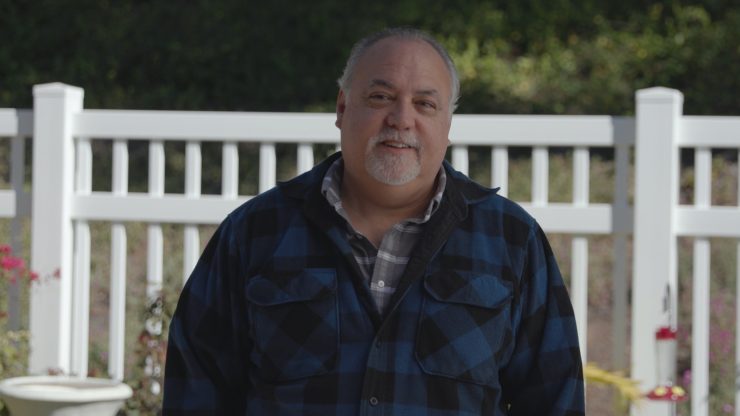
This is the setup without the 1200d Pro turned on.
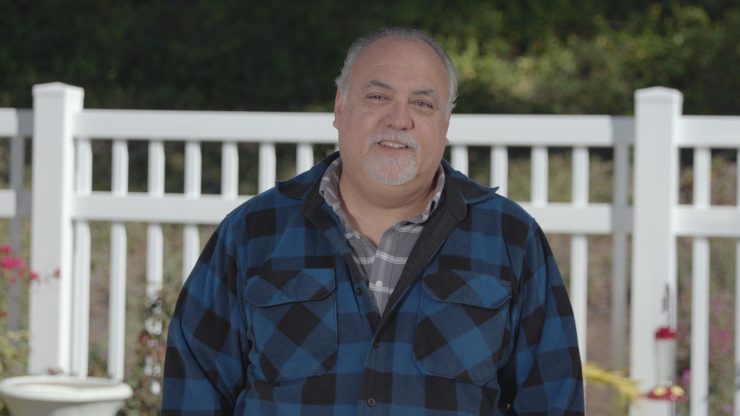
And here it is on at 100% output with the Medium reflector.
The light is bright and I could have dropped the output a bit to make it fill a little less and moved it over a bit more. I also could have put a diffusion frame in front of it to soften it a bit as it’s fairly harsh. You get the idea. There is a lot of punch available when using the 1200d Pro outside.
Color Accuracy
Like the output tests, the color test is from 3-meters using all three Hyper Reflectors with the light set to 100% output.
Bare Bulb
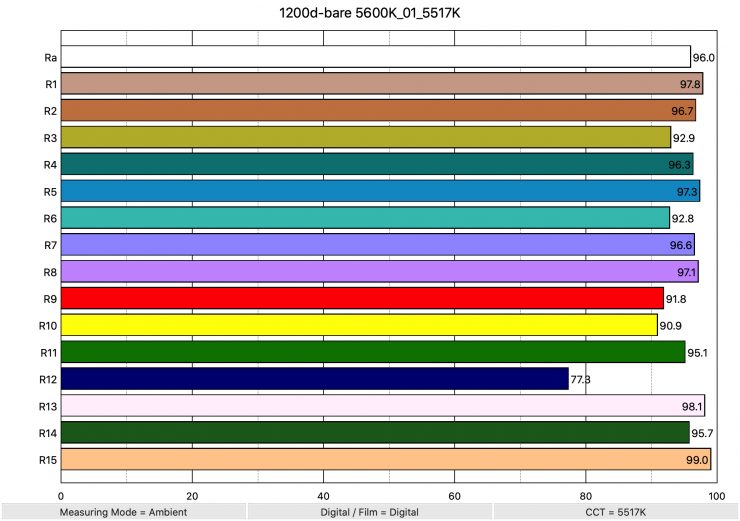
Wide Hyper Reflector
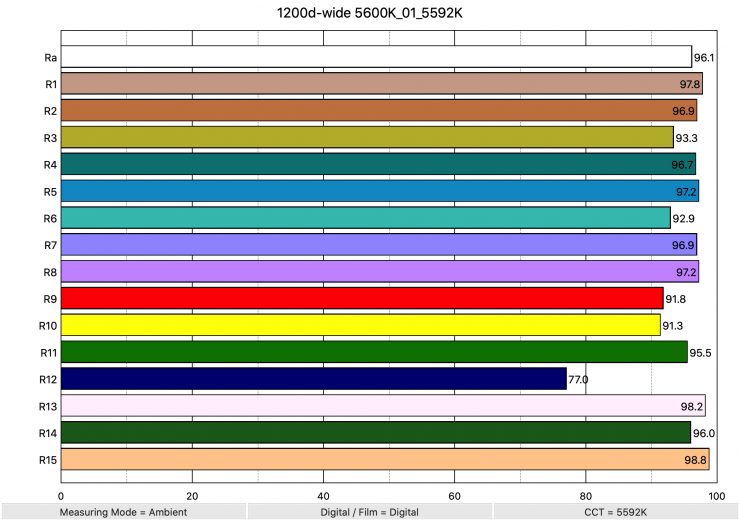
Medium Hyper Reflector
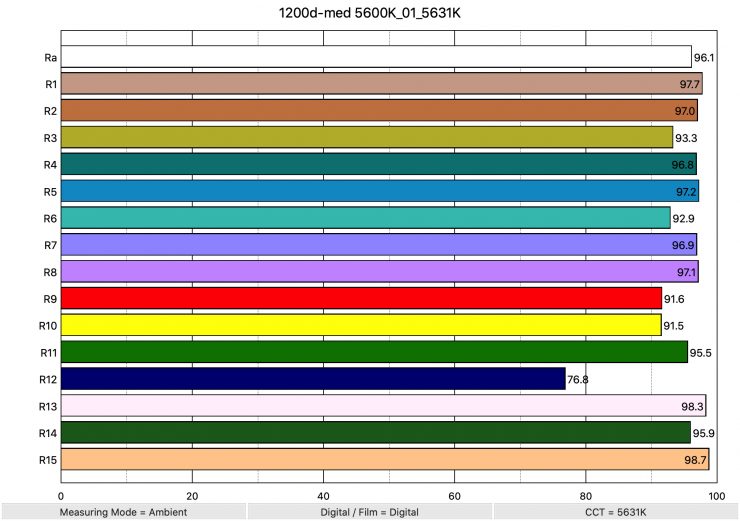
Spot Hyper Reflector
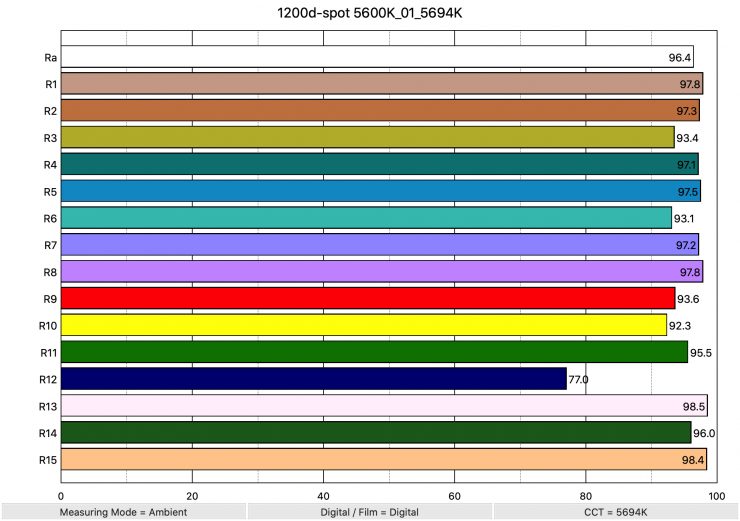
In a nutshell, the CRI is good. The bare bulb Average CRI is 96.0 with an Extended CRI of 94.36. The Kelvin came in at 5517K.
| EXTENDED CRI | CCT | |
| Aputure LS 1200d Pro (Open Face) | 94.36 | 5517K |
| Nanlux Evoke 1200 (Open Face) | 95.18 | 5377K |
| Aputure LS 1200d Pro (55° Reflector) | 94.5 | 5592K |
| Nanlux Evoke 1200 (45° Reflector) | 95.13 | 5353K |
Above you can see how this compares to the Nanlux Evoke 1200. While the extended CRI scores are fairly similar, the Aputure has better Kelvin color accuracy.
All in all, these readings show the fixture performs very well and won’t give you any color issues.
Softboxes and Modifiers
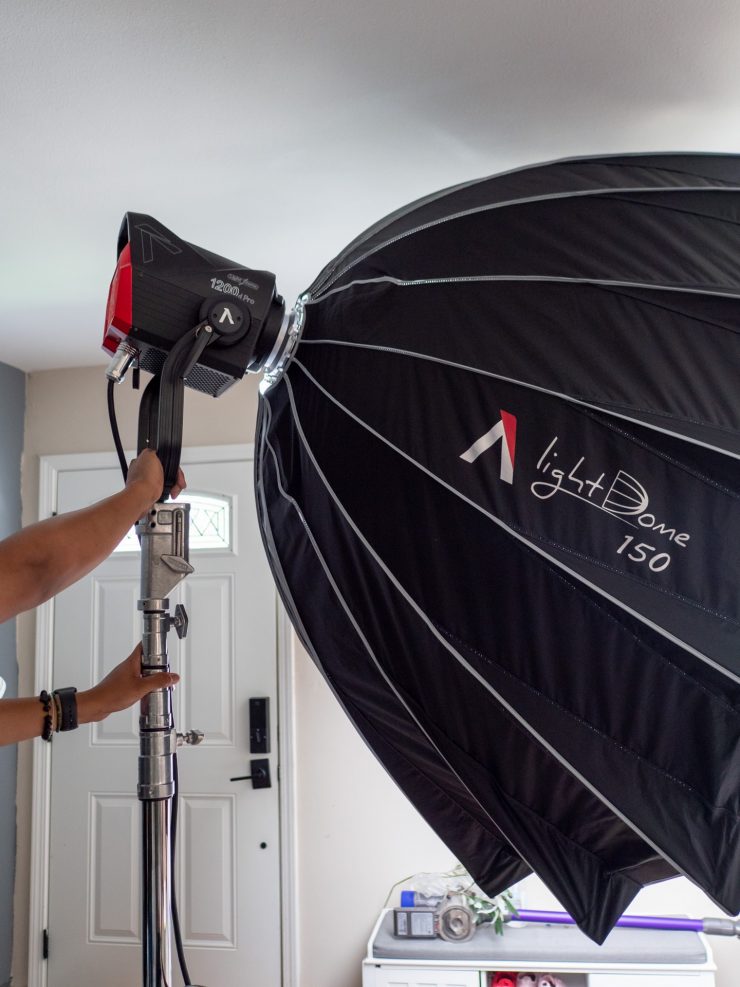
With so much output, the 1200d Pro is great for punching through diffusion or a giant softbox. With a lot of power, you have a lot of options. The F10 Fresnel designed for the 600d Pro will work but not as well as it does with the intended use on the 600d Pro.
What is compatible? Well, I’m glad you asked! Aputure has made it easier to understand what currently works with the LS 1200d Pro and is as follows.
Optimized
Aputure accessories that have been developed specifically for the fixture or perform with a professional level of efficiency/effectiveness.
- LS 1200 Hyper Reflectors
- F10 Barn Doors
- Light Dome 150
- Light Dome II (Remove Inner Baffle, Remove Gel Holder)
- Light Dome SE – (Remove Inner Baffle)
- Light OctaDome 120 – (Remove Inner Baffle)
- Lantern 90
- Light Box 60×90 – (Remove Inner Baffle)
- Light Box 30×120 – (Remove Inner Baffle)
Compatible
Aputure accessories that can be safely used on the listed fixture(s), potentially with a lower level of efficiency/effectiveness, and are compatible with the fixture’s accessory mount. Safe usage primarily considers weight & heat durability.
- Bowens Standard Reflector
- Bowens Hyper Reflector
- F10 Fresnel
- Lantern
- Space Light
Third-Party
Accessories developed specifically for the fixture or to be used on multiple different platforms, including this fixture by third-party manufacturers.
- SNAPBAG® Octa 5′ SBRRUO5 Rabbit Rounder Universal
- Chimera Bowens S-Mount Speed Ring Modifiers
- Compatible Bowens Light Modifiers (≥1m/3ft diameter)
With this info, you can easily find accessories that work, and in the future, I’m sure other brands will make modifiers that will be compatible. When you step up to this type of brightness and heat, you have to be more careful.
When using a softbox with COB fixtures, I like adding the included inner baffle to spread the beam out and avoid a hot spot. A fresnel works differently on COB fixtures than they do on traditional tungsten light. It does increase the output and sharpen the edges but just doesn’t cut as well. The current F10 is massive, so I could only imagine how large a new version would be for the LS 1200d Pro.
Side note: There aren’t many options in the 1200w COB fixture space that are affordable. Matt reviewed the Nanlux StormEvoke 1200, which is a 1200 watt COB. Check that one out as well!
Pricing and Availability
The Aputure Light Storm 1200d Pro retails for $3390 USD and is available today. As a comparison, the Nanlux Evoke 1200 is $3,350 USD.
Final Thoughts
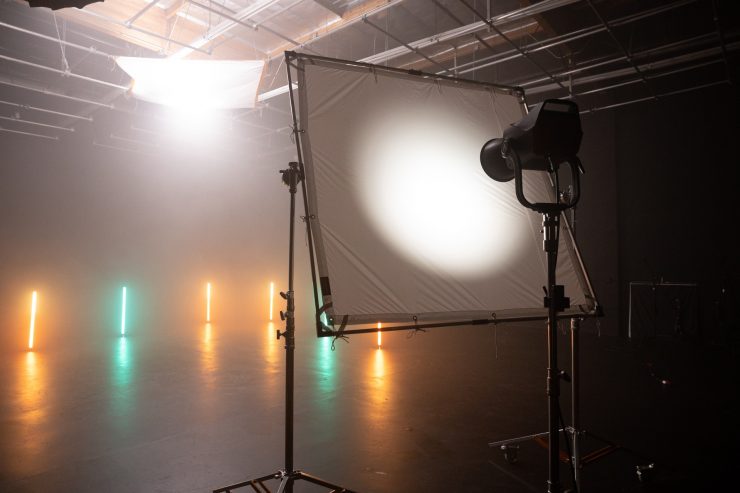
The Aputure Light Storm 1200d Pro packs a good punch with excellent build quality. Aputure did a great job on the design. This fixture isn’t for everyone as it’s very much a specialty light for occasions when a high output light is needed.
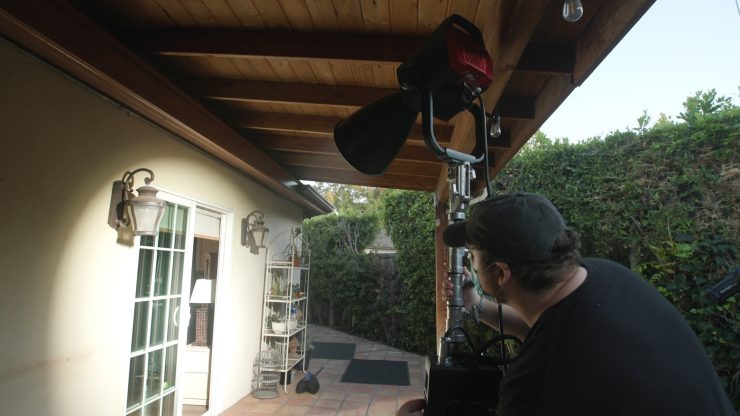
It will work well outside for a key and fill using a scrim or bounce our pushing through a window to create a look such as daylight coming into the room. That is where lights like these shine. It’s similar to a 1200 HMI without the hassle of the fragile bulb and its cost. HMI’s are also very expensive.
I don’t think it’s a good choice if you need an all-rounder type fixture as the fan is louder than I like for interviews or if dialogue is being recorded indoors and around 3 meters.
I think it’s important to know what you’re getting into. If you need this kind of firepower, the Aputure Light Storm 1200d Pro is one fixture worth looking at.

